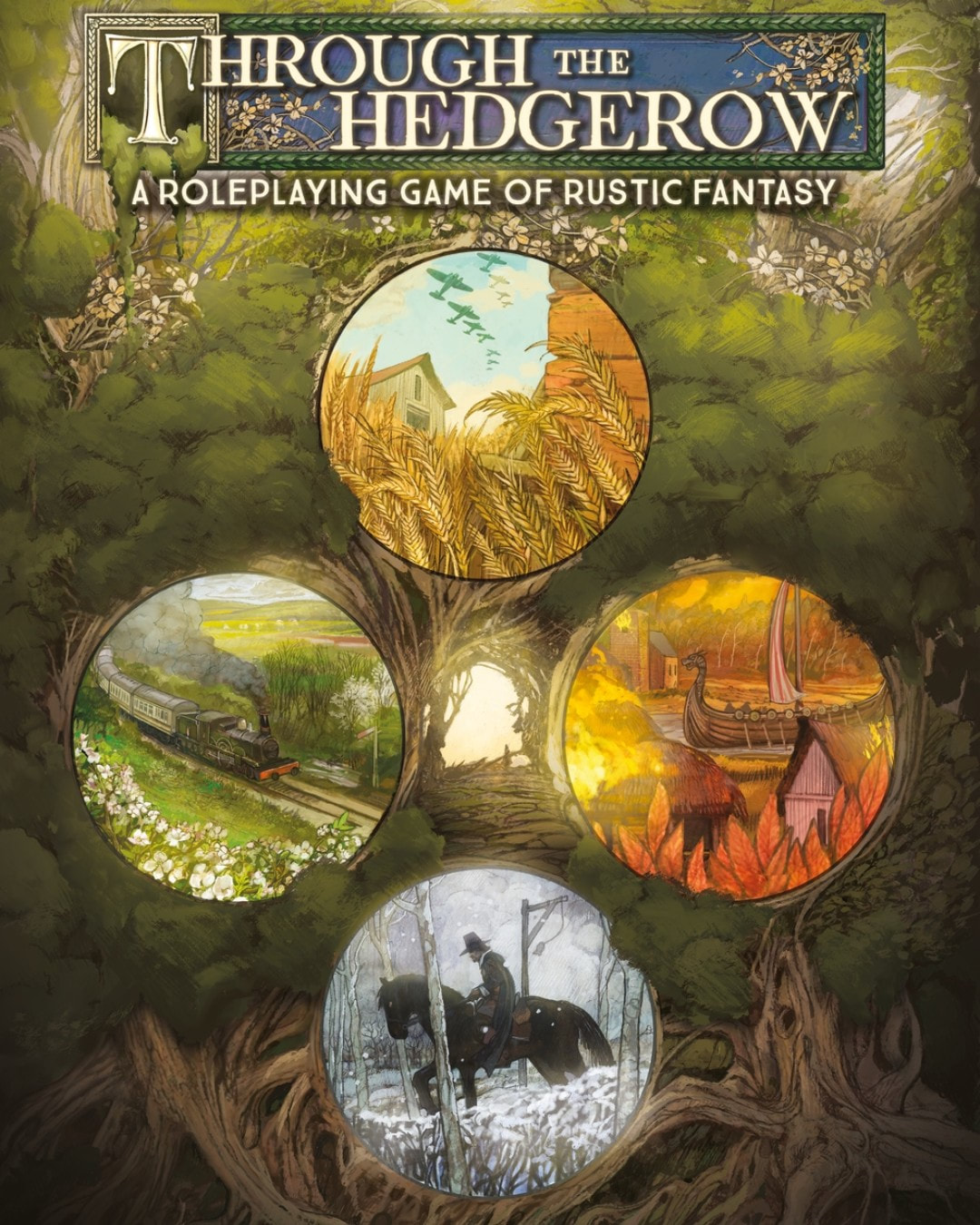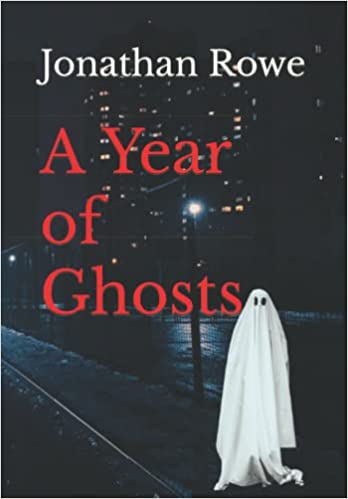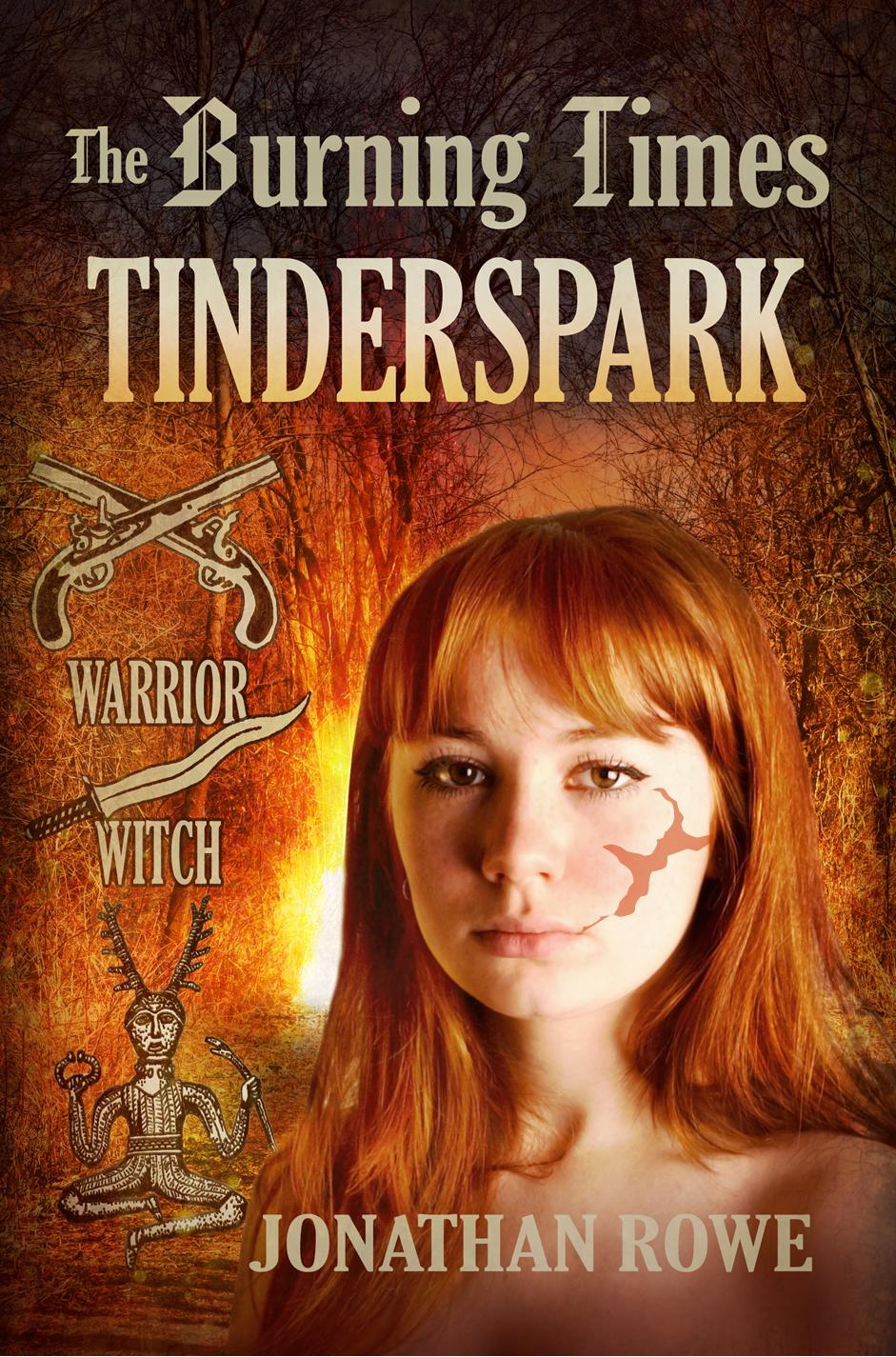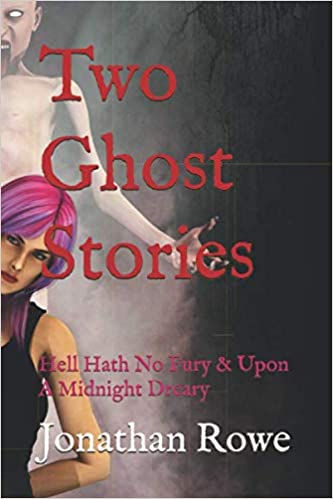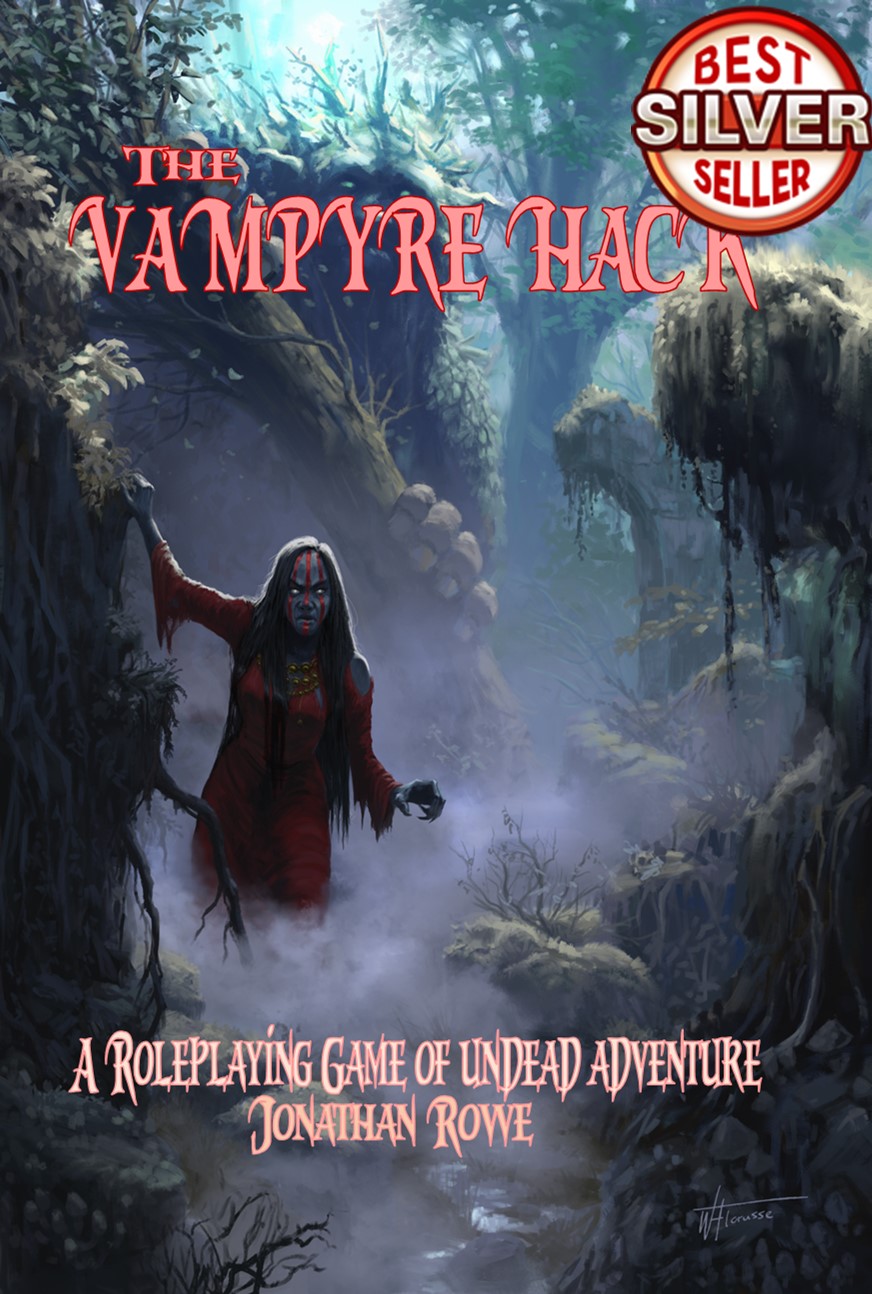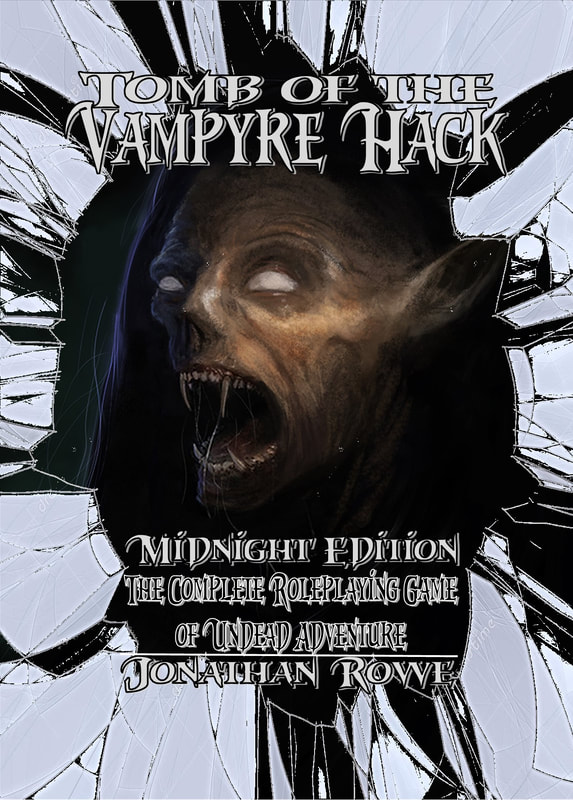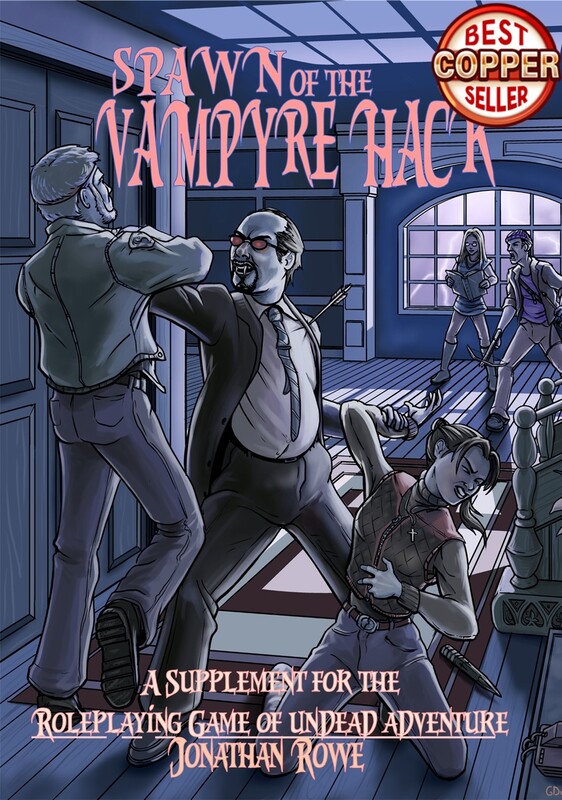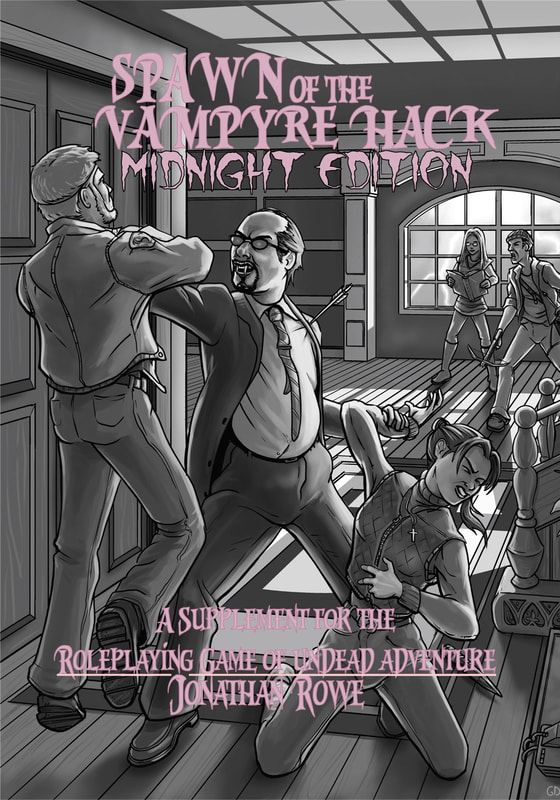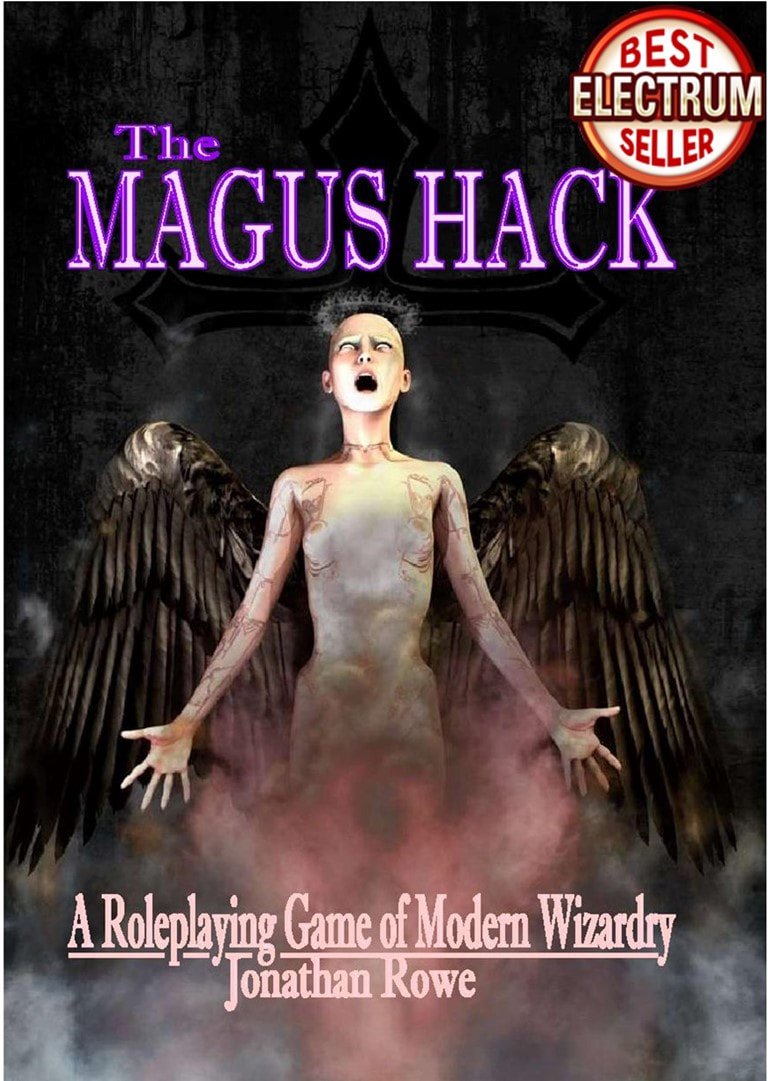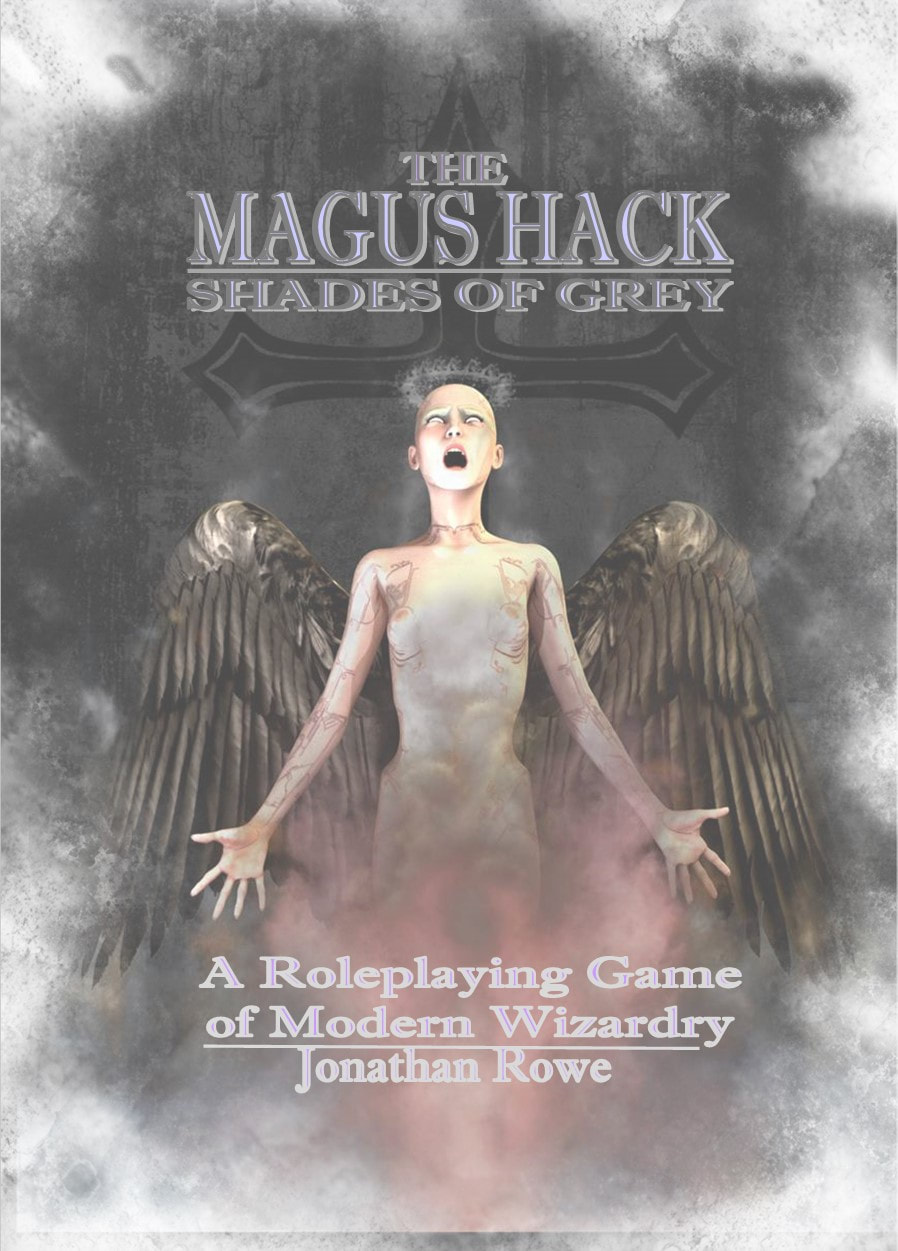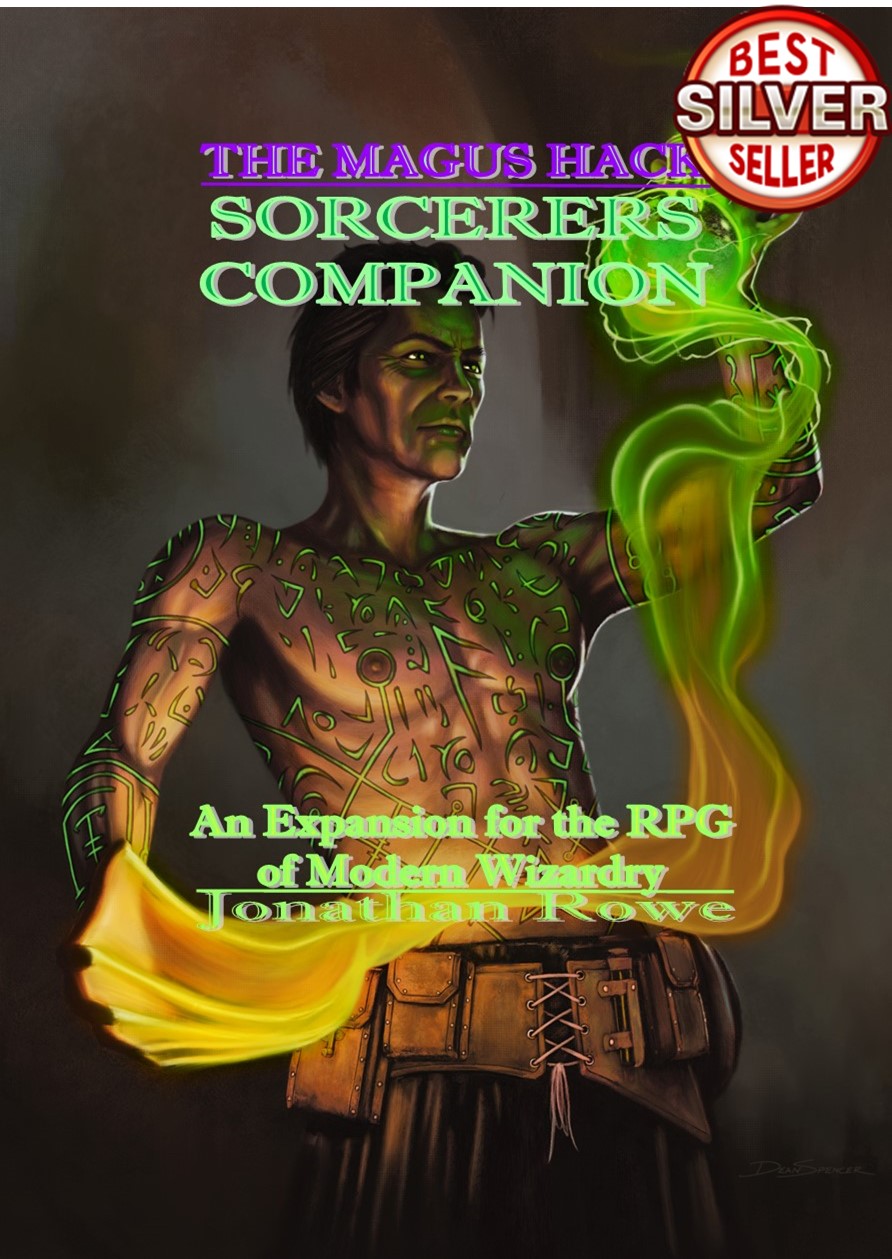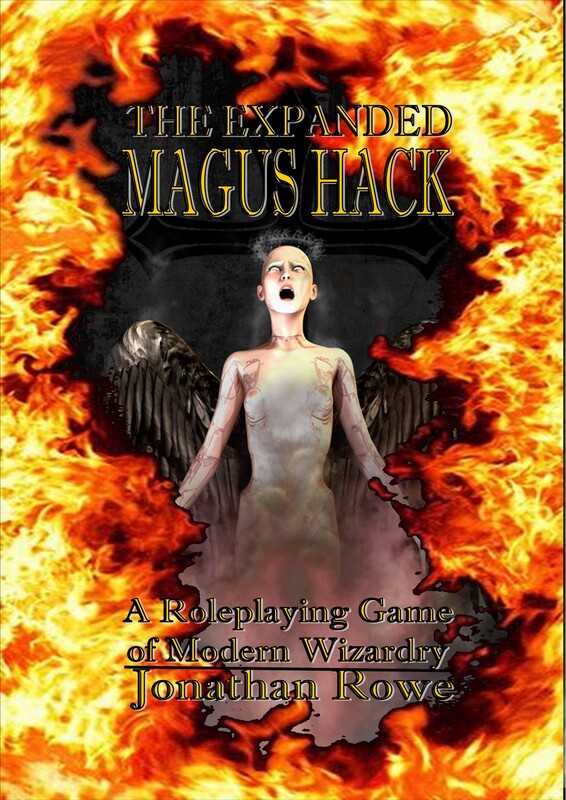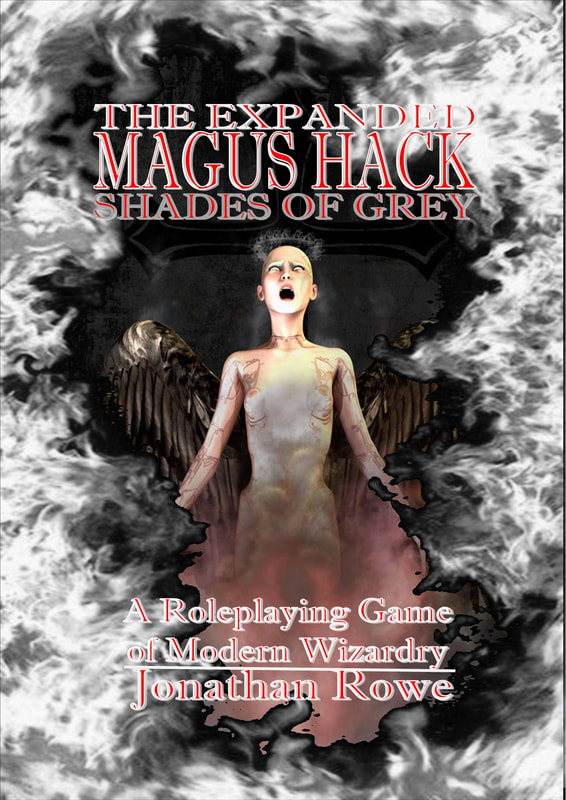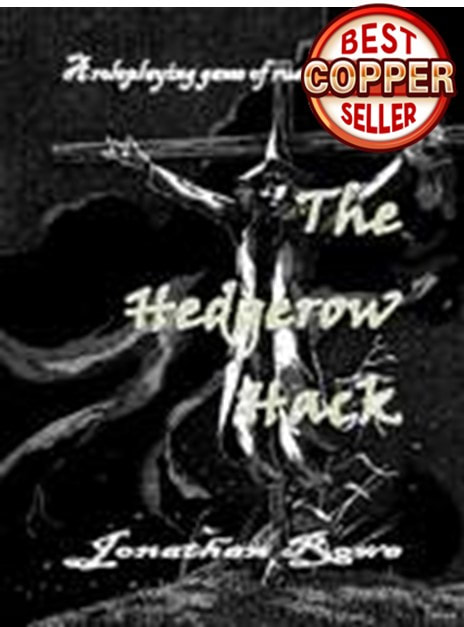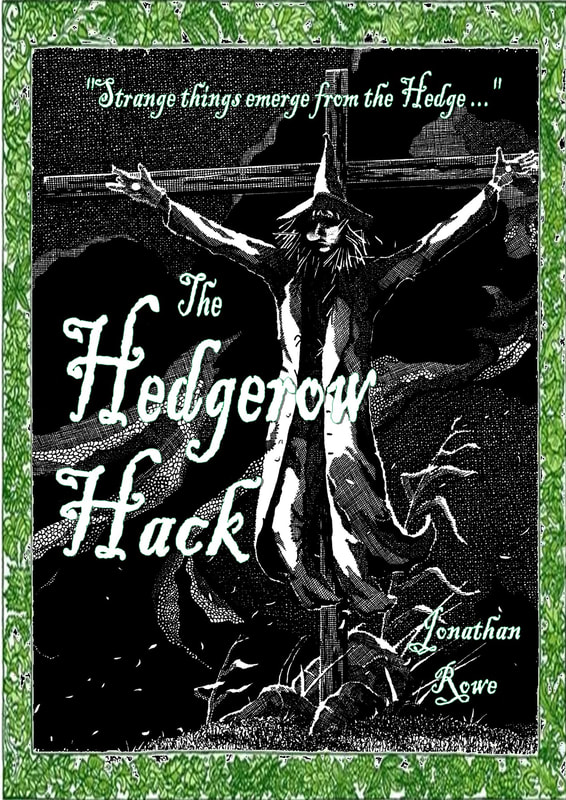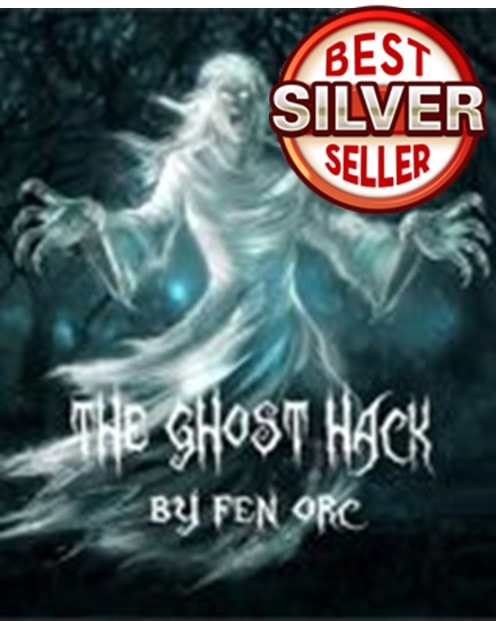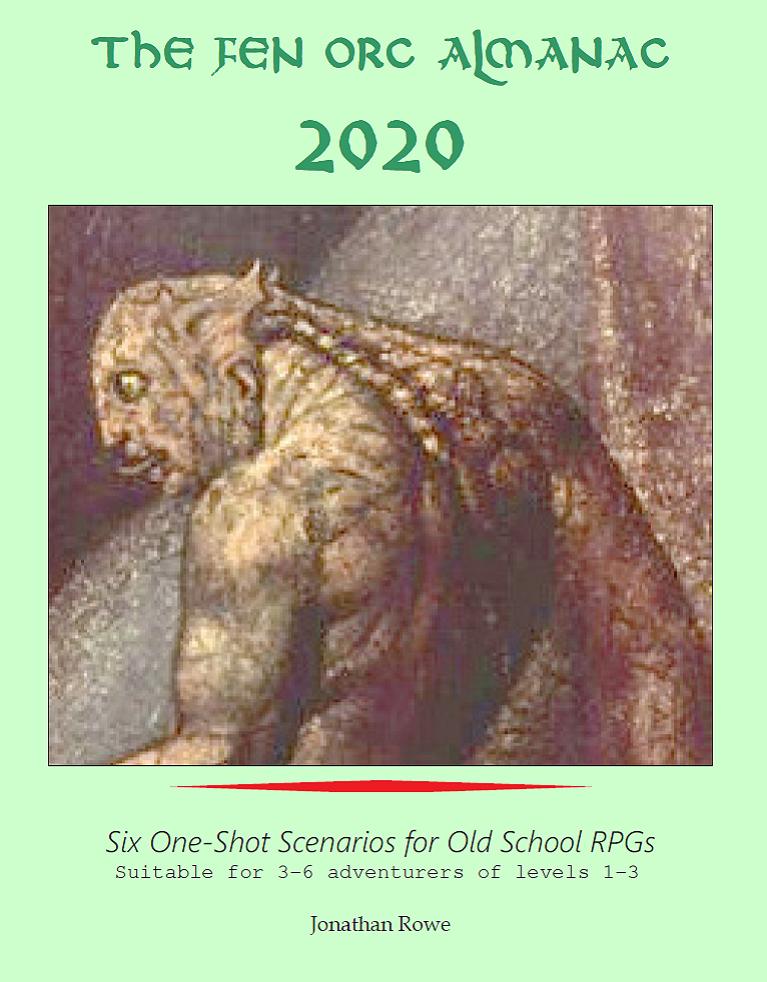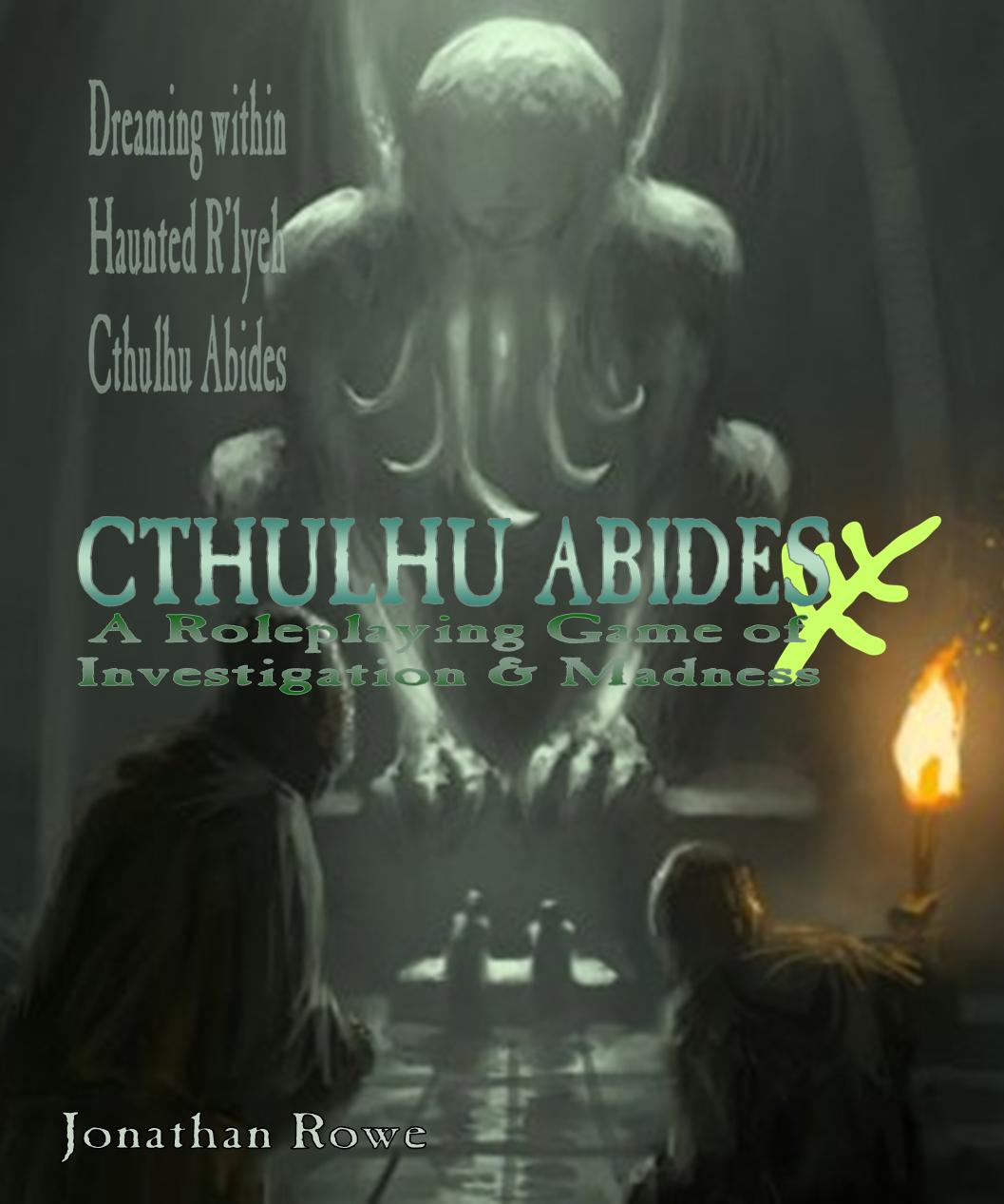|
Hot on the heels of The Vampyre Hack (see blogs passim, such as here) comes its unholy spawn, a rather dense supplement covering mortals and almost-mortals that serve, traffic with, and hunt down the undead. The dynamic cover is ‘All Hope Is Lost’ © Gary Dupuis. The book is available as PDF from drivethrurpg or physical copies from Amazon. Like most sprawling endeavours, this book started as a modest project to provide some rules for human Witch-hunters, either as more developed antagonists or as Player Characters battling against NPC vampyres. But then I added in more detailed rules on the Familiars that serve vampyres ... and then I thought I ought to cover the half-vampyric Dhampirs who are born with vampyre blood in them ... well, I got carried away. I'll take this promotional blog as a chance to indulge in a bit more critical nostalgia about Vampire: the Masquerade in the 1990s, the directions it took, and the various ways I've stuck with or departed from that template. Ghouls Just Wanna Have FunGhouls were there in 1991, in the original V:tM rules set. They are humans given a sort of provisional immortality and a bit of a strength boost by feeding on vampire blood. If the immortality and the strength isn't enough of a motivation, they're usually victims of the Blood Bond, making them devoted slaves of the vampire that feeds them. You can use the background dots in Retainers to represent these guards and flunkies, a convention which established an anonymity about them which endured right through the product line. Subsequent expansions developed the vampire Clans massively, but never really got to grips with Ghouls, who surely outnumber actual vampires by orders of magnitude and were pretty essential for their functioning and safety. Ghouls: Fatal Addiction came along in 1997 to set things straight. The book was part of the Year of the Ally series, focusing on the sidekicks in all the World of Darkness games at that time. Its cover and interior art drew heavily on BDSM themes, making it feel like a release from the company's Black Dog imprint, specialising in mature themes. It's been replaced by similar supplements for later editions, but the original is still on driverthru in all its kinky glory. Ghouls:FA leans pretty hard into the idea of Ghoul-dom as soul-crushing addiction and debasing submission. The supplement actually has a lot of neat rules for Ghoul characters of different sorts, including settling lots of questions about the nuts and bolts of feeding on vampire blood and the effects of withdrawal. The only catch is that the theme of sexual fetish running through the art and a lot of the fluff fiction rather distracts from its purpose. What was needed was a book looking at Ghouls across the vampire world and the uses different Clans find for them. Instead, there's a rather relentless focus on sexual and kinky motivations, to the point of making you wonder whether the authors are venting some personal issues. Guy Davis' art is GREAT, but if your PC's Ghoul is a snooty cordon bleu chef or a garrulous taxi driver named Frank, you might wonder what all the leather and rubber is for. Making the Revenant Relevant & ResonantWhile the poor old Ghouls were being debased, another concept was emerging from the margins of the World of Darkness. A rather controversial supplement called Dirty Secrets of the Black Hand (1994) introduced the idea of Revenants, which are humans born to Ghoul parents and granted long life and supernatural powers by the vampire blood in their veins. Yes, 'Revenants' is a bit of a stupid word for this sort of creature, since they haven't died and come back to life again. It's an odd misstep for White Wolf, who were normally so inspired in their naming conventions. But then, DSofBH is full of missteps and Revenants are among the few concepts introduced in that book to be adopted widely. DSotBH introduced three Revenant families bred by the Tzimisce vampires to serve the Black Hand: Enrathi child-snatchers, Marijava spies, and Rafastio witches. Ghouls:FA introduced a few more that serve the wider Sabbat: monster-wrangling Bratoviches, mortal-manipulating Grimaldis, scholarly Obertus, and party animal Zantosas. Other splatbooks, especially for Tzimisce, added many more - and the Tremere get their own Revenants, the wizardly Ducheski. There's no doubt that Revenants are a significant addition to the World of Darkness setting, shifting it away from 'real world with vampires in it' into a dystopia infested with half-human collaborators practising abduction, murder, and exploitation on a grand scale. Your mileage probably varies with this sort of thing. It's part of the mid-'90s 'Vampions' phase of the game where everything got lurid and nihilistic and the 1st edition's rather gentle and melancholic moral tone was binned. The designers seemed a bit ambivalent about Revenants. Perhaps aware of how their presence in a game could destabilise the power politics of the World of Darkness, they took pains to point out how most Revenant families survived only in remote parts of the world (this was the '90s: Eastern Europe or Central Asia might as well have been Oz) or worked solely for the Tzimisce, with their parochial Balkan obsessions. Vampire Hunting: what a difference a decade makesIn 1992 there was a delightful supplement for 1st edition V:tM called The Hunters Hunted which took the idea of mortal vampire hunters and turned them into player character options. Covers are so revealing, don't you think? Janet Aulisio's cover art for the 1992 original is full of atmosphere, as a geeky squad of amateur hunters peer by flashlight into a cellar, clutching their tomes of lore, stakes and a mallet. What's down there? Dare they descend? Will they ever come out again? By contrast the 2013 edition shows a bunch of dudes straight up staking a vampire on the floor. Something subtle has been lost along the way ... Hunters Hunted is maligned as a flimsy document that lacks ambition. It sets out motives for vampire hunting, gives some equipment and a few templates, and describes some organisations that hunt vampires, like the governmental NSA and CDC and the occultist Arcanum. It introduced the idea of 'Numina' or minor magical gifts, including the power of True Faith hinted at in the original rulebook and paths of 'Thaumaturgy' for mortals that were later re-branded as Hedge Magic. The main thing the book offers is a ton of theme and sensibility. Predating the cosmic scope of the later World of Darkness, it describes a setting in which vampires are the main - or possibly the only - supernatural threat and Hunters go after them armed with chutzpah and solid brass balls and not much else. Contrast 1999's release, with Hunters getting their own standalone game Hunter: the Reckoning. By the end of the '90s, the night has become a crowded place and Power Creep is well under way. Vampires are by now assisted by Ghouls in gimp suits and veritable armies of Revenants, not to mention all those Level 6+ Disciplines. New-look Hunters are called 'the Imbued' and they are honest-to-goodness superheroes with magic powers. Yup, that's where the game line ended up. So, what went wrong?In a sense, nothing went wrong. Vampire: the Masquerade was incredibly successful. It went from a little indie project to a world straddling publishing phenomenon, with spin off TV shows, card games, and video games. It beefed up, put on some muscle, lost its shyness, gained some swagger. The original themes of moral struggle and redemption got sidelined, in favour of horror, epic sweep, and Nietzschean bombast. It was following the fans in all of this. People got the game they wanted, which wasn't quite the same as they game they were originally pitched. The 1st edition rules had a story serialised in the illustrations, in which a a family man turned into a vampire by a seductive lover at a 'Midnight Michelangelo' exhibit finds the resolve to confront his creator and win back his humanity. Later editions abandoned this sort of sentimentality, in favour of torture-porn dominatrices and inhuman spiritual paths. Each to their own, but the later iterations of Vampire struck me as coarser than its first expression, for all that the setting became crowded, louder, more violent, and more dazzlingly diverse. There's a metaphor there, for postmodernism, or growing up, or something. Expanding the Vampyre HackThis book took a lot of writing. The Vampyre Hack adopted the framework of Matthew Skail's excellent Blood Hack and adapted it to thinly-disguised pastiches of the 'Classic 7' vampire clans from V:tM. It pretty much wrote itself. Bride of the Vampyre Hack was a bit more innovative, playing fast and loose with the independent and Sabbat Clans introduced in later V:tM supplements. More novelties required more thought, but the templates were still there to lean on. Both are on drivethru (click images for links) and as a bundle, while there's a complete physical edition called Tomb of the Vampyre Hack on Amazon. Spawn of the Vampyre Hack goes a lot further from the source material. First off all, there's a bunch of rules for mortals. Mortals can only get to 5th Level, they have to choose between increasing their Usage Dice or getting useful Talents, they suffer Hunger and Exhaustion and more formidable Out of Action (OofA) penalties. They're flimsy. Familiars Let's start with Familiars (aka Ghouls). In V:tM, any vampire can turn a human into a Ghoul. In Vampyre Hack, you need a Greater Blood Gift to do this or a Rank 2 Goetic Spell. Starting characters could recruit a single Familiar via a Lesser Blood Gift - and the lordly Sangrali can create Familiars for free as their class ability - but Familiars are generally rarer and a bit more precious as a commodity. They are an investment. You're also restricted to managing no more than one Familiar per level you have (twice that for Sangrali) which makes it important to choose them carefully. There will still be vampyres out there whose Familiars are sex toys, but the rules make you choose between such self-indulgence and more practical concerns. Of course, any vampyre can bind mortals to him using the Sanguine Fetter (i.e. blood bond) but Fettered mortals don't become Familiars: they still age, they don't get super powers, it's just not as useful. Out of your general pool (or Paddock) of Familiars, one is your adjutant, known as your Grimalkin. This Familiar is a cut above the rest: you've imbued her with your essence, she goes up in levels with you and acquires more powerful Blood Gifts. Grimalkins get the player character treatment. A Talent available to some Familiars is Unfettered, which weakens the Sanguine Fetter, allowing PC Grimalkins a measure of independence. It also explains the existence of Gallowglasses, who are Rogue Familiars struggling to preserve themselves by working for payment in vampyre blood. Alchemical Talents enable them to avoid the Sanguine Fetter by making blood donations last longer or even removing the enslaving effects. Familiars at 1st and 2nd Level can hold their own against a vampyre of the same level, but even with the extra powers that kick in at 3rd-5th Level, vampyres start to pull away. Unfamiliars Then there are the other Familiars that don't have it so easy. Blajini are the malformed creatures that higher level Zoltan vampyres create with their flesh-warping. They struggle to pass for human, but at least they aren't usually Fettered. Strega vampyres can't create Familiars with their blood and few of them know Goetic magic, but they summon ghosts and place them into corpses and their Zombies serve many of the same functions. Of course, the ghost has its own memories, attachments, and agenda, and the rules encourage Zombies to pursue a side hustle of dealing with the issues they died without fixing. Chorazin vampyres use Goetia to create Golems and Flesh Golems make tank-y alternatives to Familiars. Once again, the brain sourced for the Golem preserves fragmentary memories and desires from when it was alive, which PC Golems can fulfil when their masters aren't watching. Un-persons are the soulless victims of the Unlife that higher level Rakasha vampyres manipulate. It's not much fun playing one of these, but how about playing all of them? The Bhuta is the collective intelligence of the Un-persons serving a vampyre and it switches its consciousness between bodies in order to pursue its Weird - an alien agenda that the vampyre had better not find out about. Unfamiliars are an exotic option for experienced roleplayers, especially as they are hiding not just from humanity, but concealing their independence and intentions from their own vampyre masters. Dhampirs Dhampirs are what Revenants should have been called (though, to be fair, the World of Darkness applies the term to a different type of creature). Since Familiars and Unfamiliars can't beget life, something very odd has to happen for one of them to conceive a child who will be born with vampyre blood. I set about concocting reasons why this might happen. For example, the Ajakavas have their foetal soul replaced by a ghost thanks to necromancer and are born 'possessed' while the Grosvenors are descended from werewolves whose vitality overcomes the poisonous vampyre blood in their parent's body; Czernobogi are made fertile by a cthonic ritual in a sacred grotto while Harpagons have literally made a deal with a devil; the all-female Nafarroa have used their witchcraft to remain fruitful while the alchemist Darzis use potions. The Fae-touched Duvaliers, werecat Nunda, and leprous Jahangirs have similar backstories. Dhampirs are split between the Vassal Lineages who work directly for vampyres and the Mercenary Lineages who manage a degree of independence, selling their services without committing themselves. What I'm trying to do here is build the idea of Dhampirs existing independently (albeit very contingently) from vampyres. Part way between humans and the undead, they're a 'third force' in the setting, albeit a weak and disunited one. They function as powerful enforcers for the vampyric 'hegemon', but also potential allies PCs can go to that won't automatically turn the in to the Elders. They're not liminal figures like V:tM's Revenants, but they're independent and unreliable, and as likely to be the targets of vampyric plots as the instruments employed by them.. Witch-hunters Here are the Hunters that this supplement was supposed to be all about in the first place. There's a bunch of mortal character classes, like Clergy, Psychics, Shamans, Techies, and Special Agents that cover the broad templates from Hunters Hunted. The Fanatics and Paragons are a bit more like the 'Imbued' from Hunter: the Reckoning, since they are mortals whose life-changing traumas or supernatural benefactors confer powerful abilities. The Security Usage Die from Vampyre Hack is reinterpreted for hunting vampyres. You have to force the vampyre to roll Security by fulfilling investigative challenges until it shrinks and fully exhausts: then you've got him at your mercy. Yes, it'a a pretty clumsy system, but most of the time Players will roleplay their way to the showdown before the Die gets exhausted, which means a trap or ambush is in store. What has Spawn of the Vampyre Hack got goin' on?The Vampyre Hack is my part-apologetic, part-wistful, part-resentful love letter to Vampire: the Masquerade. Partly, it's a fun project to reinterpret the clunky handfuls-of-dice 'Storyteller System' into a simpler, more intuitive D&D-style game. Partly, it's a way to go back to vampire RPGs without the wider setting that V:tM acquired in the '90s, much of which I took issue with. It's a chance to approach the clans, lore, and institutions, like ghouls and revenants, afresh, saying to myself 'How would you rather this had developed?' Partly, it's an original creation, saying, 'Isn't this a novel and intriguing way of doing vampire tribes and their various undead and semi-undead apparatchiks?' TL:DR, Spawn of the Vampyre Hack concludes this project for the moment. I've got a scenario in mind and a solo rules set in development, but the old vampire itch has been scratched. If you play Vampyre Hack, with or without its Spawn, let me know how it goes! Next on the list, The Full Moon Hack, for werewolves and their ilk.
0 Comments
Two new additions to the Vampyre Hack family, bringing everything published so far together in one volume. Tomb of the Vampyre Hack with lurid red interior and the budget 'Midnight Edition' in B&W throughout. The striking cover art is by John Blaszczyk. I like selling on drivethrurpg but their interface for uploading books is ... unhelpful. Once I've mastered a software package like Affinity, I should be able to create softback and hardback options for drivethru, but until then it's PDF-only and you must go to Amazon for the physical editions. Amazon has a nice new budget colour option (which is why Vampyre Hack costs less than Magus Hack, until I get round to re-creating the old books with this new option). However, this option doesn't offer print-on-demand in Japan and Australia and it's still a bit pricey. Which is why the Midnight Edition is here. It's the same as the standard Tomb of the Vampyre Hack, but it's all in Black & White which drives down the price. What's next for the Vampyre Hack? I'm working on a set of tables and mechanics for generating adventure outlines or running the game solo - meaning GM-and-one-player or GM-free, according to taste. This sort of roll-your-adventure would be anathema to the designers of Vampire: the Masquerade, but it works pretty well for The Vampyre Hack, partly because it's core processes are indebted to D&D (classic 6 stats, levels, hit points) and partly because I've already outsourced some storytelling decisions to dice rolls, like the Security Die that exhausts and triggers a crisis or the vampyre demesnes (or 'Belfries') which are districts in each city with their own rules. Inspiration for this comes from a rather lovely fantasy RPG called Scarlet Heroes by Kevin Crawford. It's a OSR game, but it's strayed a little further than most from the Original D&D template, not least in its setting, which is a South Asian archipelago blending Chinese and Japanese influences. Scarlet Heroes and the 1st ed. AD&D sourcebook Oriental Adventures - links to drivethrurpg If OSR classics like Labyrinth Lord take their cue from D&D as it took shape in the early 1980s, then Scarlet Heroes is referencing a particularly fine AD&D sourcebook that reinterpreted the standard classes in a fantasy version of Asia: Oriental Adventures (1985) by David "Zeb" Cook. If you're a fan of 1st edition AD&D, then OE is a must-have, particularly for the way it reinterprets the original D&D classes in a new context. Of course, here in 2023 it's all very problematic and culturally appropriated and so forth, which is why publisher Wizards now front-loads the product description with a hand-wringing disavowal - but hey, they have my respect because they're still making it available in unedited and unadulterated form. Try getting a copy of Agatha Christie or P.G. Wodehouse that's free of bien pensant tinkering by the publishers. But I digress! Scarlet Heroes doesn't wade into those murky waters: it just presents a system for rollicking adventures in a fantasy Asian setting, with the emphasis on FANTASY. The monster bestiary is particularly vivid and unsettling, with great art and evocative names. If there were enough days in the week and enough players to seat at my table, I'd happily run Scarlet Heroes. But here's the thing, I don't even need the players! Kevin Crawford wraps this slim book up with a fantastic set of tables for rolling up an adventure in a city, wilderness or dungeon - and then tops that by adding mechanics and tables for a solo adventure system. It's simple and intuitive and I want to adapt it to modern cities and The Vampyre Hack. If you own VH, you'll know I've already gone a certain way down this path with tables for generating cities, campaign goals and story hooks and plots. The plan is to build that into a more complete system. Since it's a vampire RPG, there will have to be some elements besides just gathering clues, getting out of scrapes then having a big fight - there has to be a moral dilemma or an unexpected betrayal or a deep plot being revealed. But VH already has the basic mechanics for inserting these dramas. These solo rules will go straight to drivethrurpg as pay-what-you want. Once they are done, it's time to publish a Vampyre Hack Module. Red Rain Falls is my working title for a three act scenario that should cover enough sessions to get a group of vampyre PCs up to 3rd or 4th level by the end.
Robert G. Male's cover illustration for the expansion just pops with ghoulish glee. You can find the Bride on drivethrurpg or a softback edition on Amazon. When I was gripped by an urge to revisit 1990s Vampire: the Masquerade, I didn't want to buy back into its convoluted lore, multifarious Disciplines or Great Handfuls of Dice, much less its tired tropes about each Clan. I wanted an OSR-style approach, simple Classic-6 Stats, roll-a-d20 resolutions. I wanted the Black Hack's addictive exhausting die mechanic. I wanted Matthew Skail's Blood Hack RPG ... But then I had to adapt it to V:tM's broad outlines and it ended up becoming a game in its own right: the Vampyre Hack was born. Still advocating for Matthew Skail's Blood Hack; my own Vampyre Hack is also on drivethrurpg or there's a softback/hardback on Amazon. In the last blog, I shared some design notes for the planned expansion, inspired by where White Wolf went next with Vampire: the Masquerade in 1991. Four new vampire Clans arrived plus a fifth former-Clan, but they were all half baked. Each one of them has been revised several times over the decades, whereas the 'Classic Seven' Clans from Mark Rein-Hagen's original rules remain pretty much unaltered. In particular, it seems to me the decision to root these new Clans in (stereotypes about) real world ethnic groups and religion has been very problematic. It's a direction of travel I wanted to reverse with Bride of the Vampyre Hack. Then, in 1992, there were more innovations. The 1992 Players Guide to the SabbatIf the 1991 Players Guide (PG) had been a bit of a disappointment, the following Players Guide to the Sabbat (PG-S) was a barnstorming tour-de-force. Up until now, the Sabbat had been a shadowy sect of vampire cannibals who didn't seem to care about restraining their humanity or hiding from humans - your classic Big Bad Evil Guys in any campaign. Now here they were as player character options - with a Sabbat chronicle now very much an option too. For everything that felt half-baked, wishy-washy or clichéd in the PG, there was something developed, sharply realised and wildly imaginative in the PG-S. Not that Vampire needed revitalising, but PG-S was that brilliant third album after a sophomore slump - like Blondie's Parallel Lines. One of these things is just like the other one Lasombra and Tzimisce At the core of what PG-S offered was a pair of new Clans. The Lasombra are shadow-wielding puppetmasters and the Tzimisce (how we anguished over the pronunciation!) are flesh-warping sociopaths. The contrast between this pair and the lacklustre efforts in the PG cannot be understated. Although not rooted in anything (to my knowledge) in real-world vampire folklore or horror movies, these two Clans immediately made themselves at home in the game's legendarium. Unlike the hokey Assamites or Ravnos, these two felt archetypal not stereotypical. Like the Classic Seven, they've been extensively added to since then, but not revised in their core concept. Moreover, although taking some flavour from the real world regions (Tzimisce are pagan demonists from the Balkans) and cultures (Lasombra are parodies of Roman Catholic aesthetics), they're not boringly reductive in the way that Setites and Giovanni were. Fans loved them - and still do. I bet, if someone took a global poll of Vampire players and asked for their favourite Clan, Tzimisce and Lasombra would take the top two positions, and by a clear margin. In hindsight, there were problems brewing. The designers clearly had an urge to tie vampire Clans in with real world cultures and kept pushing Tzimisce in the direction of being literal Transylvanians. They couldn't make their minds up about the weird Sci-Fi horror Discipline of Vicissitude - infamously, a later supplement suggested it was an alien parasite from another dimension. A goofy mis-call, but understandable because Vicissitude just didn't seem to fit with the other vampiric powers (it was always hard to imagine a non-Tzimisce learning it). A related issue, though in itself a nice touch, was adding a Derangement discipline for Malkavians. In hindsight, should have been their gig from the outset - though it raises the issue of why this Discipline should be available to any other Clan? Really, it's a class ability, not a generic power that this type of vampire happens to excel at. Meanwhile, the connection between the Sabbat generally and Lasombra in particular with Latin America hasn't aged well. It's a barely-coded phobic reaction to Hispanic immigration into the USA with some derogatory tropes about Mexico and Catholicism for good measure. Spain now joins Italy as a country that, in the World of Darkness at any rate, is basically just an exporter of vampires. But all that was for later editions to clear up. My problem is more with the moral direction the game took. Mark Rein-Hagen's original rules (released only a year earlier but now already outdated and replaced by a 2nd edition in 1992) emphasised the tragedy of vampiric existence: 'a beast I am lest beast I become' was his catchphrase and the tone was elegiac and despairing. The PG-S ushered in a new 'Vampions' style of play, where PCs exulted in their monstrous natures or else acted like amoral nocturnal superheroes. Lasombra and Tzimisce and the wider exploration of the Sabbat's ideology didn't create this drift, but it certainly intensified it. The new catchphrase felt like: 'my monster's cooler than yours!' The 1992 Storytellers HandbookI remember valuing the Storytellers Handbook (SHB) at the time, since it offered lots of advice (and a few clarifying worksheets) for designing settings and supervising political intrigues. It also marked what I think was the last appearance of the suggestion that vampires could regain their humanity by killing their creators and the first of many revisions of the game's clunky and imprecise combat system. It also developed the World of Darkness by providing stats for werewolves, magi, ghosts, faeries, demons, and mummies. Since a lot of this content went on to get its own bespoke game (Werewolf: the Apocalypse came out that same busy year!), the SHB now functions as a sort of roleplaying time capsule, preserving a window into the state of the game before the now-famous wider setting emerged. But it's lasting contributions were two new Bloodlines and their signature disciplines: the flying Gargoyles and the demon-worshipping Baali. Both were clearly signposted as being NPC-only propositions: the Gargoyles because they were a slave-race for the wizardly Tremere and the Baali because they were just cartoonishly evil. I never really understood why the Gargoyles needed to be vampires at all. In the Bride of the Vampire Hack, they're Golems, as they always should have been. The introduction of the Baali brings me back to V:tM's recurring vice. Mark Rein-Hagen creates a game in which everyone is a monster but also no one is: every vampire is a tragic figure, locked into bestial behaviour by her own physiology and the toxic political structure that such physiology creates. The design team almost immediately bins that notion by making irredeemably evil vampires a playable option within the Sabbat and introducing first one (the Setites) and now two vampire factions that literally worship Evil. In fact, the following year, Chaos Factor was published: a cross-over scenario for Vampire, Werewolf and Mage which was pretty much the template for the 'Vampions' style of play and featured a Baali 'Methuselah' as its ultimate Boss Fight. These trends are not unrelated! Ahhh, Sam Haight - a ghoul who became a werewolf who became a mage. They always reassure you not to worry, it'll never happen, then immediately it does. What's the Bride's take on this?Writing the Vampyre Hack involved a straightforward adaptation of the 'Classic Seven' Clans into Blood Hack style Tribes. Only la Tribu Dullahan represent a real step away from the Malkavian template, offering a mystically divided personality instead of a vague and problematic 'just roleplay crazy.' Bride of the Vampyre Hack tackles the later Clans and the last blog covered the independents, known here as les Tribus Dévouées for their devotion to the Blood Gods. Incidentally, Vampyre Hack enables me to downplay V:tM's role for Antediluvians, leaving it unknown whether the 'Blood Gods' are really vampyres and whether they founded particular Tribes. One benefit of the Hack approach emerges straight away. By treating Tribes as character classes, the clumsy one-note Disciplines get abolished in favour of a broad selection of Blood Gifts available to all vampyres. Now, class-based abilities give each Tribe its distinctiveness. For example, Tzimisce become la Tribu Zoltan. Instead of creating a bunch of vicissitude-style Blood Gifts, the Tribe gets a flesh-warping class ability the starts off small (granting extra eyes, shaping claws or scaly hides) and grows into merging bodies together to make monstrosities. The Zoltanok have the predictable curse that they must rest in their grave earth, but I've gone a bit further with this, giving them a Frenzy triggered by crossing running water and a connection to the land that can make them unlikely allies of environmentalists. The Tzimisce pic from the 1998 Revised Edition [left] really captured their weirdness, but 1996's Vampire: Dark Ages [right] got the Transylvania vibe - l felt the newer Clans were served better by the Dark Ages setting than the modern one Meanwhile la Tribu Rakasha has a shadow manipulation ability that improves as they go up levels. They open rifts to a dimension known as the Unlife, the influence of which starts to corrupt any place they spend time in, including turning humans into black-eyed Un-people that serve as the Rakashas' familiars, but probably have an agenda of their own. Ultimately, Rakashas fear the Unlife will consume them. Rakashas don't cast visual reflections, same as Lasombra, but I've given them the rest condition of being in absolute darkness, since my Lamias (Setites) no longer have that link to being in darkness - which always struck me as overlapping with Lasombra in the first place. Molechim are my Baali analogues. I've decided to make them a barely/kind-of playable option. They're demon-possessed, but the human persona still clings on and the two struggle for control. While the demon is in sole charge, it goes about a villainous agenda to identify a special victim, corrupt them and then turn them into a Molech. The human persona can frustrate this agenda. Yes, it means there are periods where you can't fully control your own character, but it's got a tragic arc to it that I like. The general tenor of this is that these Tribes are not objectively horrible, but they are tragic and doomed. You can still play them as cool edgelords if that's your thing: Zoltan can be cackling Tzimisce and Rakasha the preening Lasombra, while Molech fits the bill for vampyre diabolist. I just like to think I've put a bit of mystery and ambiguity back into them. The intent is that these Tribes should often end up acting just like the V:tM Clans, but the reasons offered are a bit more open and interesting. For example, the Lamias (Setites) sponsor gang violence, drugs and sex trafficking, but do so because the want to bring down a social order they think is horrific for humans and vampyres. The nuance is their new weakness: they become besotted with anyone they feed from, so if they provoke a gang war in a neighbourhood, there's a mortal they must protect from the consequences of their own actions at all cost. Love and hate are part of their package; they don't just worship Evil. What other secrets is the Bride keeping?Like most RPG expansions, the main order of business is Lots More Stuff. The Coven are my ersatz Sabbat and there are rules for their unusual version of the Sanguine Fetter. I'm dialling back their inhuman horrible-ness - or at least, allowing GMs to make what they like of it, rather than baking it in. Vampyre Hack doesn't have a 'hierarchy of sins' but it does have the idea of a moral code, whereby you're spared making a Corruption check for somethings in return for making extra checks for others. Coven vampyres don't feel bad about mistreating humans but they do get corrupted if they betray, let down or disobey the Coven. There's a lot more Blood Gifts and Spells, including Necromantic Spells for the Stregas - but which other vampyres can learn if they pick up the Necromancer Elder Blood Gift. I give cities a lot of consideration, with some tables for random city generation if you want to build a game that way. Vampyres call their power bases in a city demesnes, but I figure the younger vamps are irreverent and call them 'Belfries.' There are rules for a dozen different Belfries, the dangers they pose, the benefits you can claim in them and special Exposure Crisis tables for reach one, to replace the generic table in the core rules. The Security Die mechanic from The Vampyre Hack gets a revision, incorporating the idea of Heat building up from adventure to adventure. The Security Die is a sort of wandering monster check that also represents the efforts by your enemies to cause trouble for you. Once it exhausts to zero, you have an Exposure Crisis, which might be a threat or an attack or the appearance of Witch-hunters who've been tipped off about you. Favours and Duties represent the help you can call in from grateful Elders or the chores those Elders might give you out of the blue. This is tied in to the job of maintaining the Charade that keeps mortals (largely, somehow) unaware of the undead. Favours can be leveraged for rumours or traded at the Rialto, which is the Belfry ruled by the arty Messalines. Each Tribe gets a section on its culture, with a focus on Beloveds and Ensigns. Beloved are the people vampyres feel irrational drawn to and obsessed with turning into vampyres too, triggering a centuries long obsessive relationship. Ensigns are people turned into vampyres for more practical reasons: they have valuable skills or resources that the undead want the use of. Players need to decide which type of vampyre they are and roll or choose the type of NPC who will one day be their Beloved ... It's been a minor labour of love. While Vampyre Hack just delivered V:tM-as-D&D without too many deviations, Bride goes a lot further when it departs from its source and ends up being (I suggest to you) a different and distinctive RPG.
She's on the way ... The expansion to the Vampyre Hack (with bangin' cover art by Robert G. Male) will feature 8 new undead Tribes and a bunch of other stuff to make OSR Vampyres fun again The Vampyre Hack has been an unexpected success so far - and see here for more information on modern vampires through the lens of a Hack-style Old School RPG. Ahead of this companion volume being released, I thought I'd share design notes on the new Tribes - especially as it's an opportunity to reminisce and critically reflect on the directions Vampire: the Masquerade took in the early 1990s. 1991: The Players GuideHot on the heels of the revolutionary Vampire: the Masquerade came the Players Guide. It was clearly more of a team project than Mark Rein-Hagen auteur-like approach to the core rules. Here were (excellent) essays by the likes of Stuart Wieck, David Greenburg, Andrew Greenberg and Sam Chupp. There were also four new 'independent' (i.e. non-Camarilla) Clans and a former Clan reduced to a Bloodline. And this is where the rot set in. Rein-Hagen's 'classic seven' vampire Clans were templates for a huge variety of character types. They were archetypes rather than stereotypes. The same could not be said of the new bunch - nor were their powers and weaknesses as well thought out. Assamites
Even if you were happy with the assassin stereotype, the signature Quietus Discipline felt undercooked: a one-note series of 'poisonous blood' abilities that weren't particularly powerful or versatile. Over the next decade, Assamites went through a huge number of alterations. Their blood curse was abolished. They were given magical spells. They were reinterpreted as pious Muslims. Consultants were employed to get the Arabic terminology right. They were renamed the Banu Haqim. Much less problematic, you'll agree, but (whisper it) kind of boring. The Banu Haqim have been reimagined as a nice Clan of Camarilla-friendly Muslims, with no villainous streaks and whose main weakness is that people tend to vilify them unjustly because of their stained auras. Great for representation but no longer fizzing with dramatic possibilities. Followers of Set
As with the Assamites, there have been repeated revisions trying to water down the implication that African vampires are just plain evil. These days they're known as 'the Ministry' and model themselves on slick televangelists, with the idea that Set is symbolic for the friends we screw over along the way. Never mind the implied racism, my real problem is that V:tM never needed a Clan devoted to philosophical evil. The whole point of Rein-Hagen's original premise was that being a vampire was in itself enough to produce monsters: the Beast inside, the cannibalistic social structure, the enslaving Blood Bond, the paranoia of Elders, the frustration of the Neonates, the corrosive effect of the passing centuries on conscience and empathy. There's no shortage of reasons why a group of vampires might be The Bad Guys without having to make them worship a God of Evil. Giovanni The Giovanni are necromancers who all belong to the same Mafia-like Italian family. Giovanni got a lot of development, with a series of published scenarios exploring how a Renaissance cabal of Venetian necromancers cannibalised an Antediluvian to acquire Clan status. Plus, their ghost-wrangling powers tied in with the forthcoming Wraith: the Oblivion product line. All of which is great, except for two things. Having to be some sort of Italian mobster was a bit limiting for Player Character concepts. And the idea of late Medieval wizards cannibalising a snoozing Antediluvian to steal immortality had already been done with the Tremere. The overlap became even more pronounced when the Necromancy Discipline was replaced with a collection of magical Paths and rituals, very much along the Tremere template. Since then, the Giovanni have been reinterpreted as the Hecata, a sort of umbrella Clan of necromancer-vampires, with the cannibal Giovanni just one branch. Definitely better for player choice and diversity, but even more lacking in real distinctiveness. Ravnos
To be fair, I quite enjoyed the directions they took Ravnos in and, unlike the Assamites, they never made them boring. But when White Wolf started their apocalyptic 'Gehenna' storyline in the late '90s and one Clan was slated to be destroyed, it came as no surprise that it was the under-loved Ravnos. Yes, during the 'Week of Nightmares' the entire Clan turned on each other in a cannibalistic orgy then their newly-awakened Antediluvian got nuked. Subsequent editions of V:tM were able to approach the Clan with a clean slate. That's a hell of a way to 'Year Zero' a problematic concept. Salubri
Not much else about the Salubri makes sense. It's ironic that, like the other Players Guide Clans, they're not really suitable for Players. They're Plot Hook NPCs in peril, to be protected or hunted by the PCs. The idea that the Tremere could exterminate the entire Clan and turn all the other vampires against the survivors strains belief. Sure, maybe inside the Camarilla this prejudice against Salubri would become normative - after all, recognising the Tremere as a legitimate Clan sort of implies de-legitimising the Salubri as heirs to the original Clan founder. But outside the Camarilla (i.e. throughout most of the world) there's no reason the Tremere's writ should run. Why wouldn't the Assamites, who hate the Tremere, make a point of sheltering Salubri? The developers tried to fix this by taking the Salubri in different directions: creating a martial kick-ass variant, making their blood so tasty that other vampires can't resist cannibalising them, making their bleeding Third Eye a perpetual threat to Masquerade, all sorts of muddled things. The consensus view remains that they're only good as NPCs. New Tribes, Vampyre-styleThe Vampyre Hack introduced les Tribus Éternelles – seven Tribes including the hideous Karnsteins, lordly Sangrali and hedonistic Messalines, all very much drawn from Rein-Hagen's archetypal clans but re-orientated for a simple D&D-inspired system of 6 Stats, character classes, levels, hit points and David Black's ingenious exhausting usage dice. For Bride of the Vampyre Hack I made a decision that all the Tribes would be global affairs, not regional powerbases or ethnic enclaves. The new Tribes are not defined by race or religion. I’ve called four new Tribes les Tribus Dévouées, which means ‘the Dedicated Tribes.’ This is because they are all locked into some sort of relationship with the Blood God they believe to be their founder, as opposed to the Tribus Éternelles who believe they are independent of the Blood Gods and look instead to their Elders and Voivods for authority. The Juddin The name is a Persian Zoroastrian term for an infidel. These are my rebranded Assamites and I want to link them historically to Persia – specifically ancient, pre-Islamic Persia - but the Tribe is now global and not linked to any particular Middle Eastern religion. The Juddin believe they are serving their Blood God and his strict code that all vampyres should live peacefully together and separately from humans. They see themselves as the police of the undead world. Since a lot of their laws are rather subjective in interpretation, they rely on oracles to reveal their Blood God’s wishes. PC Juddin start each adventure with a randomly rolled mission - they have to watch out for a vampyre (or any supernatural creature) doing a particular forbidden thing, like abusing humans' freewill or ruling over mortals openly or disrespecting the Elders. Then they have to work out what to do about it - and if they're too lax, they will be targeted in their turn by a Juddin hit squad. Juddin as a character class get magical silence for free - and a dramatic version that makes them utterly inaudible at all times unless they choose otherwise, including detection by motion sensors or microphones. Their poisonous blood gets more toxic as they go up in levels. The Jakhalos Jakhalò is a Romani term for the 'evil eye' but these vampyres aren't Romani. They're a Tribe whose Blood Goddess was an explorer of the Otherworld but came back changed - perhaps possessed or replaced by a doppelganger. She's been hunting her creations down and exterminating them, so the Jakhalos are a Tribe on the run from an all-powerful enemy they call Dya Milo ('Mother Vampyre'). Around the time of the fall of Rome, the last remnants of the Jakhalos hid themselves among a nomadic people making their way across Asia. At around this time, Dya Milo's relentless assaults stopped. The Tribe enjoyed a thousand years of safety, known as the Disrobireja ('the Liberation'). The Jakhalos felt a debt towards the Romani people who had (unwittingly) sheltered them - a feeling not widely reciprocated. Jakhalos are not Romani, but they are wanderers and fugitives who must change their Lair regularly or risk being exterminated. On the positive side, they can create illusions that increase n scale as they go up levels. The Lamias Lamia was a monster from Greek mythology that was located in Libya - the Greek term for Africa generally. Their Blood Goddess promotes a radical philosophy that humans and vampyres are both part of the natural order and ought to be partners. She broke with the other Tribes at the start of human civilisation. Her Tribe uses use the term 'the Ziggurat' to refer to the whole corrupt structure of urban living, with its oppressive hierarchies and predator-prey relationships. They want to tear it down but not because they love anarchy or misery but because they want humans and vampyres to be happy and fulfilled. In the 21st century, they're allies of degrowth, rewilding, population reduction and other Green concerns but also work towards making cities as unbearable as possible. Lamias can perceive weakness in any structure, social group or person and exploit it ruthlessly. They also turn into snakes and their snaky powers increase as they go up in levels. The Stregas These are the undead necromancers but with a new twist. Their Blood God now exists in the Underworld of ghosts and wants his Tribe to join him there. Special humans who die and return to life again come back with the Sigil of Strega on them visible only to Strega vampyres. When a marked mortal dies, they rise from the grave as a vampyre. Stregas seek out the bearers of these marks to hasten their second demise (ideally with but alternatively without the mortal's consent) and induct them into the Tribe. This unusual way of growing their populations makes up for Stregas having 'dead blood' that cannot create vampyres or Familiars or Sanguine Fetters. Their other compensation is their own Streghani Blood Magic which uses ghosts to accomplish the things they cannot. The Ariochites Arioch is a mysterious Old Testament king, but also the name of a demon and a Chaos God in Michael Moorcock's 'Elric' novels. The Ariochites are the hated healers with the mystical Third Eye. But here's the novelty. The Ariochites really do feed on souls and if they want to perform their miraculous healing they need to consume an entire soul. They can use this soul-energy to raise the dead - and that includes curing a vampyre. You can imagine how threatening this makes them to Elder vampyres with lots of enemies who absolutely do not want to be turned back into a helpless human. Likewise, their ability to break the Sanguine Fetter undermines the power structures vampyres enjoy or endure. Best to exterminate them on sight and by calling them 'soul sucking monsters' you are not even lying. Ariochites are one of les Tribus Perfides (the treacherous tribes) along with the demonist Molechim, of which more later. Next blog will look at the Sabbat Clans and the demon-worshipping Baali, both from 1992
In the last blog I wrote about my nostalgia for the 1990s iteration of Vampire: the Masquerade and how I was experimenting with using Matthew Skail's The Blood Hack to replicate V:tM's setting without its handfuls of d10s and burdensome lore. Then one thing led to another, as it does, and before I knew it, I seemed to have penned a new Hack-inspired RPG trans-cloning V:tM as an OSR project. Hello, The Vampyre Hack. Ducks in a row! Click images for links to drivethrurpg editions. Vampyre Hack cover art by Wouter Florusse. I've written a lot (like here and here) about my admiration for Matthew Skail's Blood Hack, so I had to think carefully about adapting it into a Hack of my own. Firstly, I don't want to cut into the chap's revenues or appropriate his ideas as my own. His innovation of the Morality Usage Die that gets bigger as it exhausts, meaning it grows quickly while it's a feeble little d6 or d8 but slows down as it turns into a monstrous d12 or d20 - that's just genius. His system for Blood Magic is very elegant and treating Blood as a usage die rather than a point pool, well that's inspired too. One point of view would be, given my love for the game and, in the words of Cogsworth: On the other hand, there are things Blood Hack is crying out for. Matthew Skail's game takes clear inspiration from V:tM but heads off in a different direction. It's not about angst and politics, it's about kicking supernatural ass in the middle of the night. There are only four clans and they are broad templates rather than factions or institutions. The setting imagines loose cabals of vampires scrapping with other denizens of the shadows rather than city-wide conspiracies. There are lots of typos and some of the rules Matthew has himself imported from other Hack rpgs are rather undigested. But the main reason is that I want to run a '90s-style Vampire campaign, but using a rules set inspired by the Blood Hack. So I want the classic array of Clans - ugly Nosferatu, aesthetic Toreador, lunatic Malkavians, wizardly Tremere, etc. - and I want Princes and Masquerade and Ghouls and Diablerie. This project started off as a Blood Hack expansion or supplement - just a few pages, really, saying "Here';s how you could port V:tM Clans into the Blood Hack." But once I started doing that all sorts of implications emerged and I found myself constructing something more like a brand new game. Let me take you through it ... Cloning or Contrasting? The first Hack RPG I designed was a root-and-branch rethink of Wraith: the Oblivion, one of White Wolf's horror RPGs from the same stable as Vampire: the Masquerade. I never made my peace with Wraith, so the Ghost Hack was an opportunity to do Wraith as (I felt) it should have been done. Shameless plugs. Among the new directions Ghost Hack took was making Wraiths vulnerable to iron and salt and I designed a scenario, Upon A Midnight Dreary, in which a team of ghost hunters secure a haunted house with strips of salt-encrusted tape along the walls and iron chains on doors. PC Ghosts find it difficult to move around unless they can influence the living to disrupt these barriers. Matthew Skail similarly departs from the White Wolf playbook in Blood Hack: his vampires cast no reflections and don't even register on film, photographs or over telephone communication - rather like the wonderfully elusive vampires in the intense '90s UK TV series Ultraviolet. Seriously, watch it. And yes, that's Idris Elba. Likewise, Skail's vampires are vulnerable to silver and holy symbols generally - the more so as their Morality Usage Die gets larger. Meanwhile, vampiric 'Disciplines' get dropped and, other than the starting build mandated by your Clan/Class, your vampire can be designed with any powers you want. Following this logic, I could have taken the Vampyre Hack down the same path, breaking away from the World of Darkness tropes and exploring vampires from a wider folkloric perspective. But on this occasion, I was more interested in creating an OSR analogue for Vampire: the Masquerade - in effect, a way of playing 90s-style V:tM with d20s, classic 6 stats and character classes. Like I said, it's a retro-trans-clone. What's in a Name? Mark Rein-Hagen, the creator of Vampire: the Masquerade, has many talents, but not the least is his flair for evocative naming conventions. His undead secret society is the Camarilla (meaning a political clique, but with connotations of medieval Spanish cloisters) and vampiric cannibalism is Diablerie (a French word for mischief with heavy hints of Satanism). The vampire Clans Brujah (inspired by the Spanish for 'witch'), Gangrel (a Scots word for a vagrant) and Nosferatu (German for vampire) along with the fear-frenzy of Rötschreck (complete with unnecessary 'metal umlaut') show off his linguistic range, while the vampire ancients are Antediluvians and Methuselahs, highlighting Biblical erudition. A clone RPG is going to feature 7 vampire lineages analogous to Rein-Hagen's Clans, vampiric cannibalism and an undead secret society. New names are important. No one wants "Generic Vampire Wizards" and "Arty Vampire Socialite Types." In Vampyre Hack, there are 7 Tribes or 'les Tribus Éternelles,' so the best name for their ruling coalition is the Heptarchy - a delightful Greek word more commonly used to describe the 7 Anglo-Saxon kingdoms of Dark Ages Britain. Sticking with Greek, vampiric cannibalism is Necrophagy, which is both horribly on-the-nose and slightly Shakespearean for 'eaters of the dead.' Chorazin is a town cursed by Jesus in Matthew 11: 20-24. It's also referenced in M.R. James' unsettling vampire story Count Magnus (1904) where the Devil-worshipping Count makes a pilgrimage to the accursed town. It seems a fine name for a cabal of medieval wizards who have turned themselves into vampires, hence La Tribu Chorazin or the Chorazinites. Leave the big coffin ALONE. The BBC did a fine TV adaptation of Count Magnus in 2022. Rein-Hagen seems to have invented 'Malkavian' out of his own head, but I went to Celtic folklore to find the Dullahan. In Ireland, the Dubhlachan isn't so much a vampire as a headless horseman but it can be a goblin or evil spirit. It's hard to get anything to match, never mind replace, 'Nosferatu' as the name for a clan of hideous vampires. I drew on Sheridan Le Fanu's Carmilla (1872), where Karnstein is the lineage of the titular vampiress. It's also the name given to a trilogy of Hammer Horror films (1970-71) so its vampire pedigree is impeccable. Pleasures? Guilty as charged! Valeria Messalina was the Emperor Claudius' 3rd wife. She had a reputation for promiscuity and cruelty and, after her grisly death, was sentenced to damnatio memoriae which means being erased from history. She is remembered today with notoriety: a 'Messalina' is a devious and sexually manipulative woman. La Tribu Messalina is my aesthetic sensualist vampyre lineage. The happy couple: Sheila White as Messalina and Derek Jacobi as Claudius in 'I, Claudius' (1976) Rein-Hagen seems to have invented 'Ventrue' for his undead aristocrats. It connotes 'vein' or perhaps 'vain' as well as 'true' - unless, of course, it's meant to refer to the 19th century Italian scientist Giovanni Ventruri. I'm going with the former, which is why I chose La Tribu Sangral for my lordly undead family. Yes, 'Sangral' means holy grail but 'Sang Real' means royal blood: I think self-absorbed vampire nobles would relish both meanings. Tokoloshe is a goblin or demon from Zulu folklore - I went looking for an African name for the Brujah-analogues precisely because that continent was so ill-served by White Wolf in the 1990s - the only explicitly African Clan developed for their game is one devoted to philosophical evil and corruption. La Tribu Tokoloshe has been recast from inveterate troublemakers to a lineage of undead warriors. Vukodlak is a Slavic vampire/werewolf hybrid, so that's an ideal name for the shapeshifting, wilderness-haunting and werewolf-inspired Tribe (never mind that it was also the name of the Final Boss in 2000's Vampire: The Masquerade - Redemption). Vive les différences Vampyre Hack doesn't end up as an utter pastiche of V:tM, I'm glad to say. Some of the differences are the result of the Hack rules engine and a couple of Matthew Skail's distinctive innovations. For example, vampyres are made distinctive by their character class (i.e. Tribe) but after that they can learn any Blood Gifts they like and this includes Blood Gifts that qualify you to cast spells. Although Chorazin excels at Blood Magic, any vampyre can dabble in it. Similarly, all vampyres take damage from sunlight, but those with a small Corruption Usage Die (renamed from Morality Die) only take ordinary damage and can stay active a few hours after sunrise or before sunset. As the Die gets bigger, sunlight starts to deal Grave Damage and you fall asleep at sunrise and don't wake up until after sunset. Similarly, holy symbols and consecrated ground start becoming a problem, but don't bother you while you are virtuous. Likewise, virtuous vampyres only need to feed every two or three nights and just a drop of blood will do; more Corrupt vampires need to feed nightly. Other differences are my own. In Rein-Hagen's Vampire: the Masquerade, any vampire can create a new vamp by feeding their blood to a corpse or use their blood to turn humans into tough but addicted henchmen called Ghouls. I thought it would be more interesting if these techniques weren't widely understood and have to be purchased as Blood Gifts - and duplicated using Blood Magic - with only the Sangrali getting to do so as an innate ability. Other changes include making each vampyre Tribe have their own distinctive way of Frenzying, with the Messalines being enraptured by beauty whilst the Karnsteins are repulsed by their own reflections. I've also introduced a Security Usage Die that represents how much protection or tolerance you have from the wider undead community. As the Die shrinks, your enemies get bolder and hitherto-neutral vampyres start to see you as a threat or an irritant. When it shrinks to zero, a threat manifests. I've got a nice table to prompt ideas - friends and loved ones get menaced, your Lair gets compromised, mooks turn up to fight you, ultimately you get Witch-Hunters or werewolf Lycans on your tail. Yes, it's a Wandering Monster mechanic by another name, but it helps promote the edgy, paranoid feel of a good Vampire RPG, especially as the Die shrinks when you fail CHA or INT tests around mortals or higher level vampyres. If you've drained a mortal (rather than just feeding on a drop of blood) then you can be 'flushed' and appear fully human - and of course the Messalines are 'flushed' most of the time as their class perk. What's it all for? I created the game to run it myself - I was intending to do a straight V:tM chronicle and refer to everything by Rein-Hagen's names in play. But now that I've written it, I'm rather intrigued by the differences and want to GM this version of a vampire campaign, with Chorazin not Tremere and the Heptarchy not the Camarilla. I wonder how much interest there is out there to do the same? I do feel that Rein-Hagen's wonderful imaginative creation, which was so provocative and teasing when it was first introduced to us in 1991, became congested, codified and overburdened by lore as the Nineties wore on. I want to go back to playing the game the way it felt when I first encountered it. The renaming and the new-but-familiar Hack engine helps me see the old game in a fresh romantic light. Like when the nerdy girl takes off her spectacles. Laney was beautiful all along!!! Who could know??? The other benefit of the Hack approach is that the game becomes a bit more pick-up-and-play. It was never terribly time consuming to create V:tM characters, but treating Clans as actual character classes accelerates things further without distorting the concept. I've added a set of tables in the Appendix that enable you to roll up your own Vampyre Scenarios, complete with the inevitable twists, betrayals and last act reveals. These might help those of you who like roleplaying without a GM! Currently, you can find Vampyre Hack on drivethrurpg, but I struggle with that site's arrangements for creating and selling physical books, so for that you can get it on Amazon.
And yes, I'll soon support it with an expansion, revisiting all those other Clans which (to my mind) were rather less successful additions to Vampire: the Masquerade and might benefit from a bit of reinterpretation. |
30 Minute Dungeons
Essays on Forge
FORGE Reviews
OSR REVIEWS
White Box
THROUGH THE Hedgerow
Fen Orc
I'm a teacher and a writer and I love board games and RPGs. I got into D&D back in the '70s with Eric Holmes' 'Blue Book' set and I've started writing my own OSR-inspired games - as well as fantasy and supernatural fiction.. Archives
July 2024
Categories
All
|

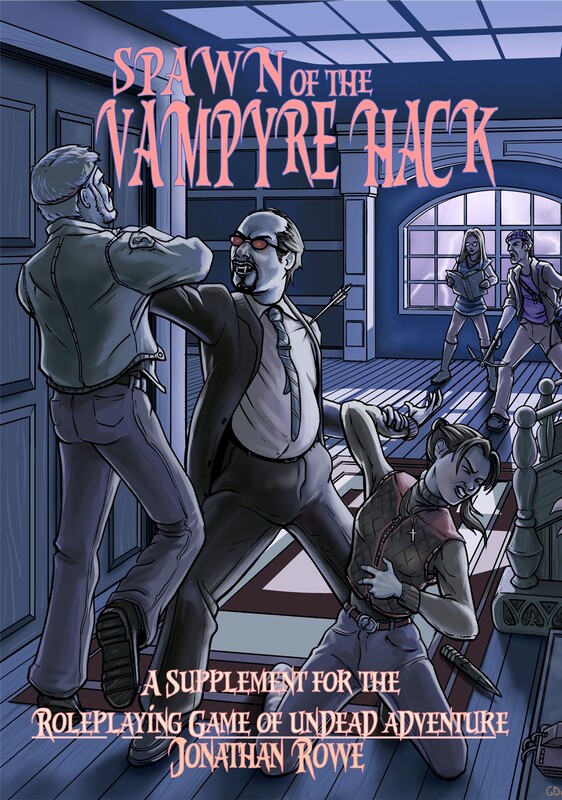
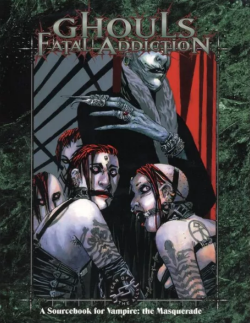
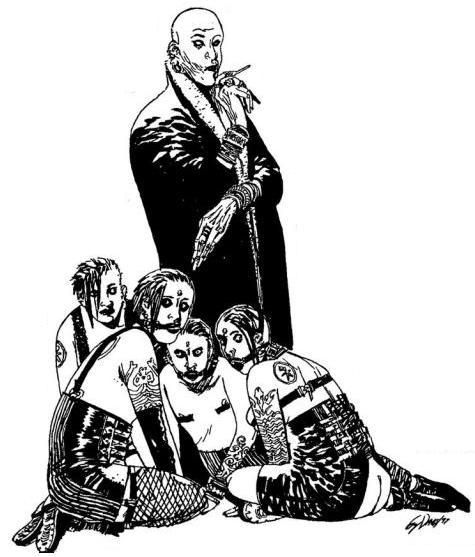
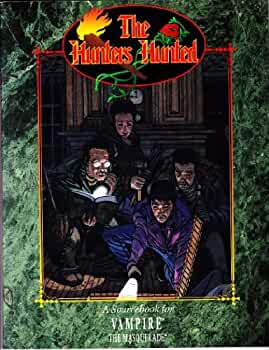
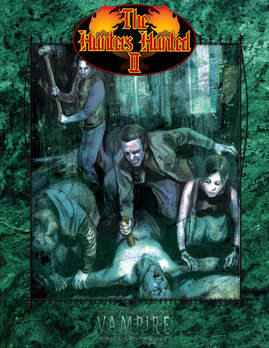
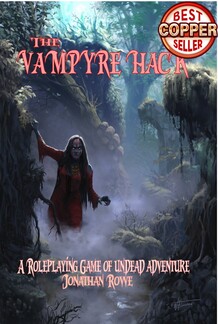

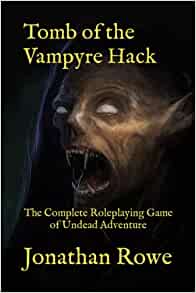
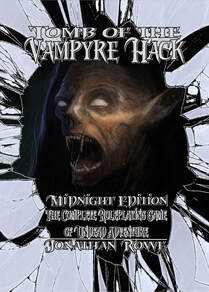
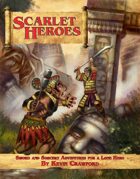
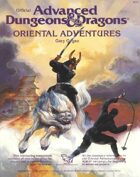
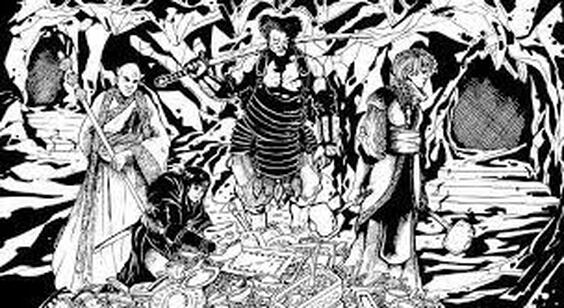

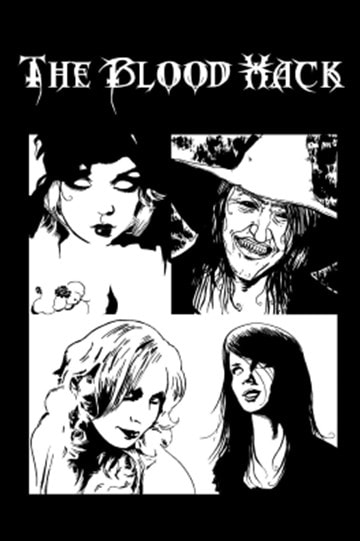

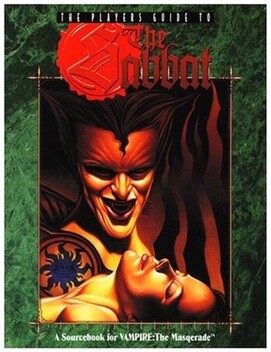
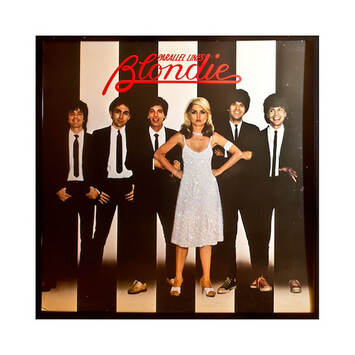
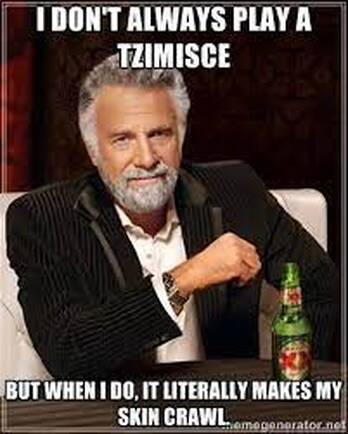
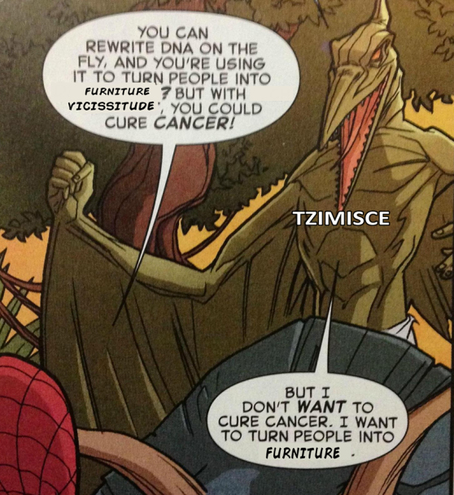
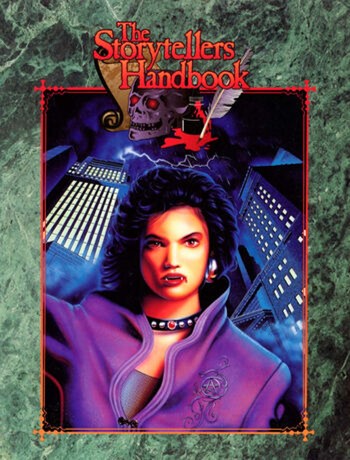

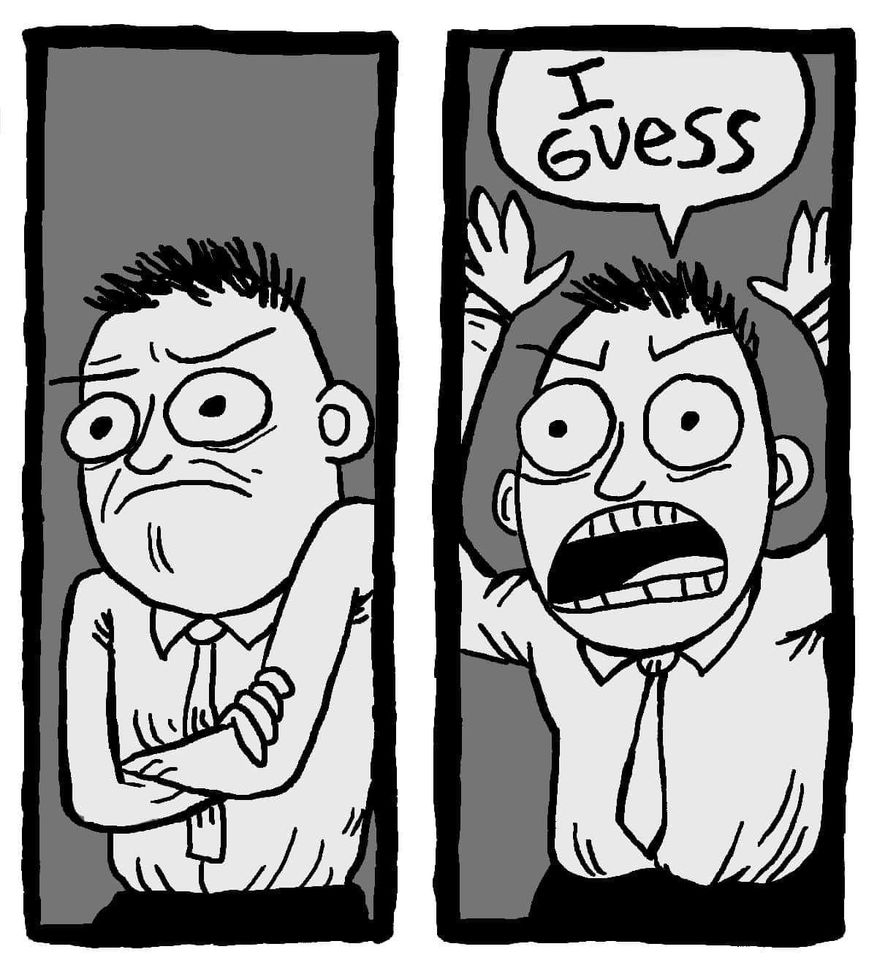
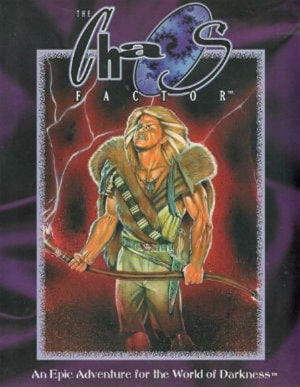
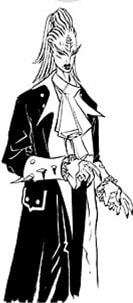
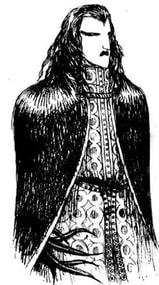
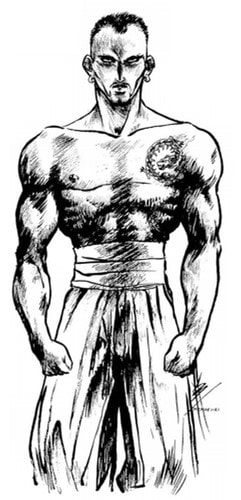
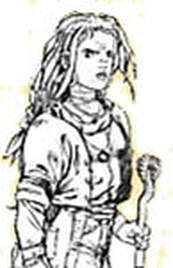
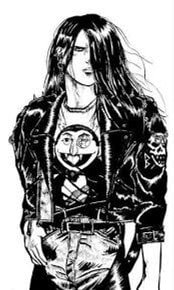
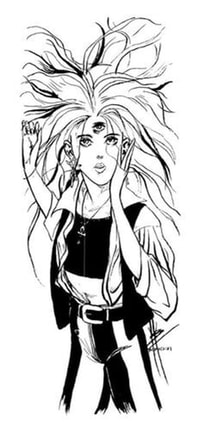
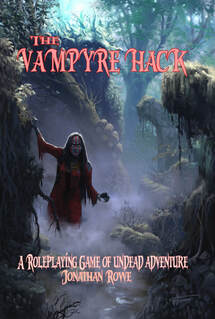

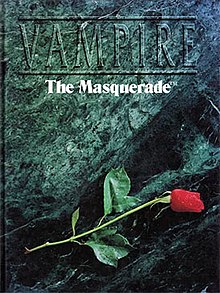
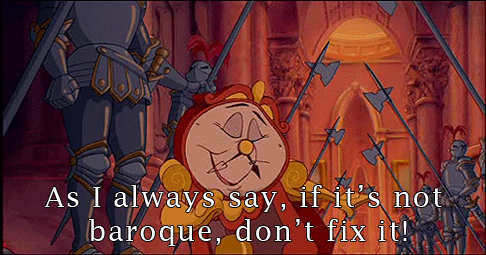
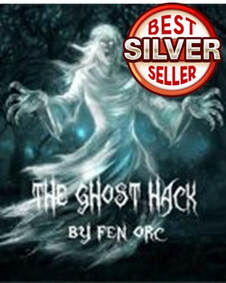
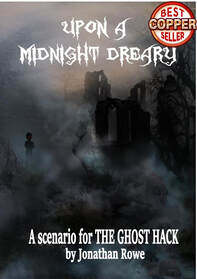
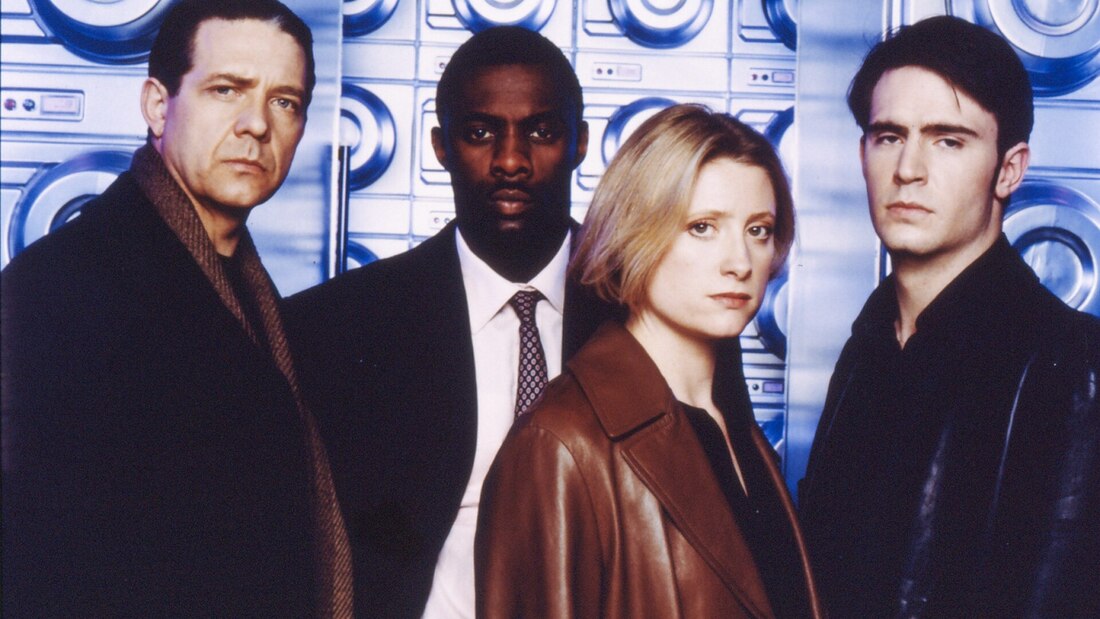
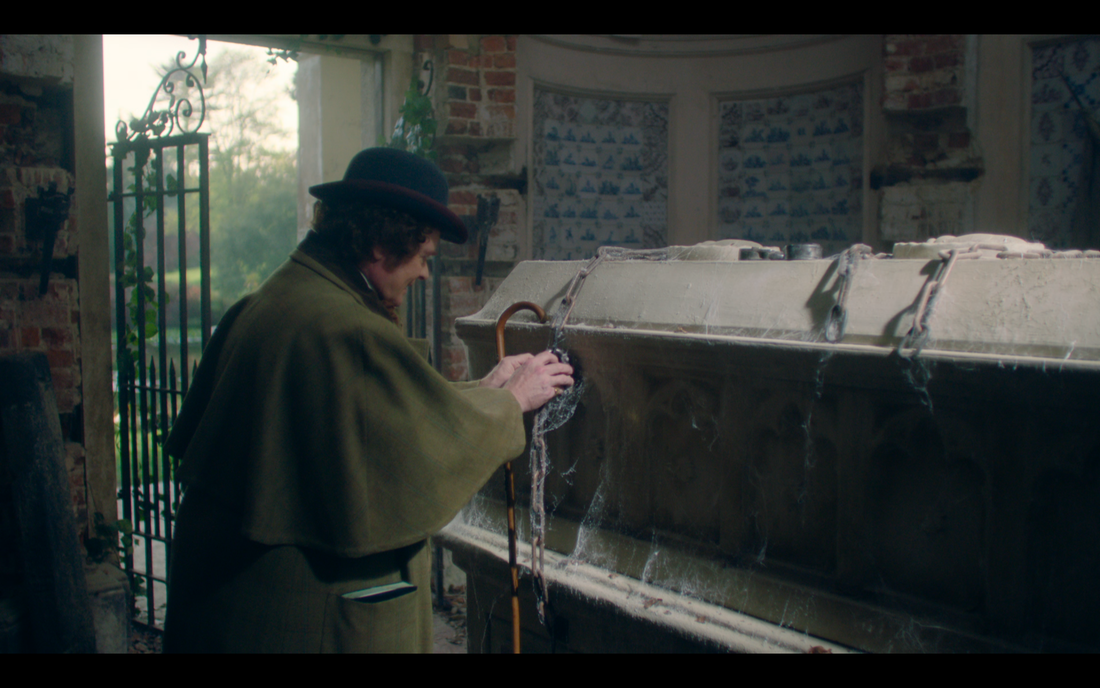
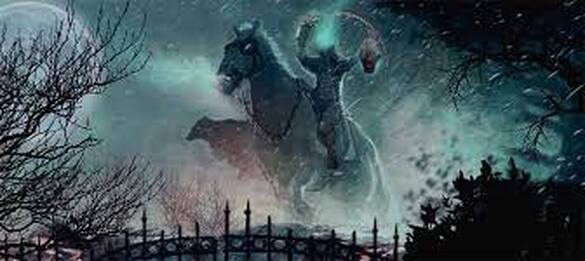
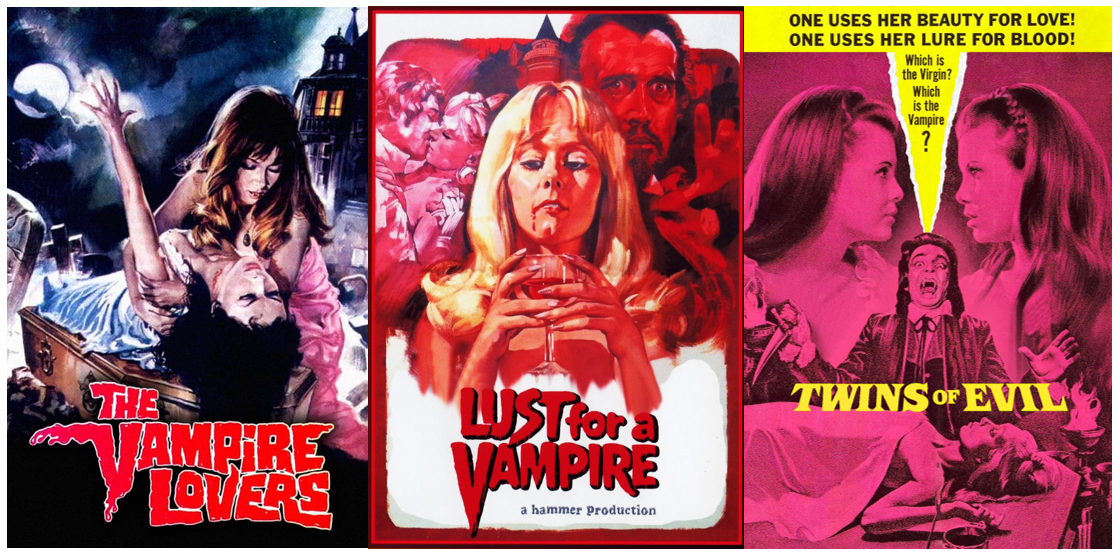

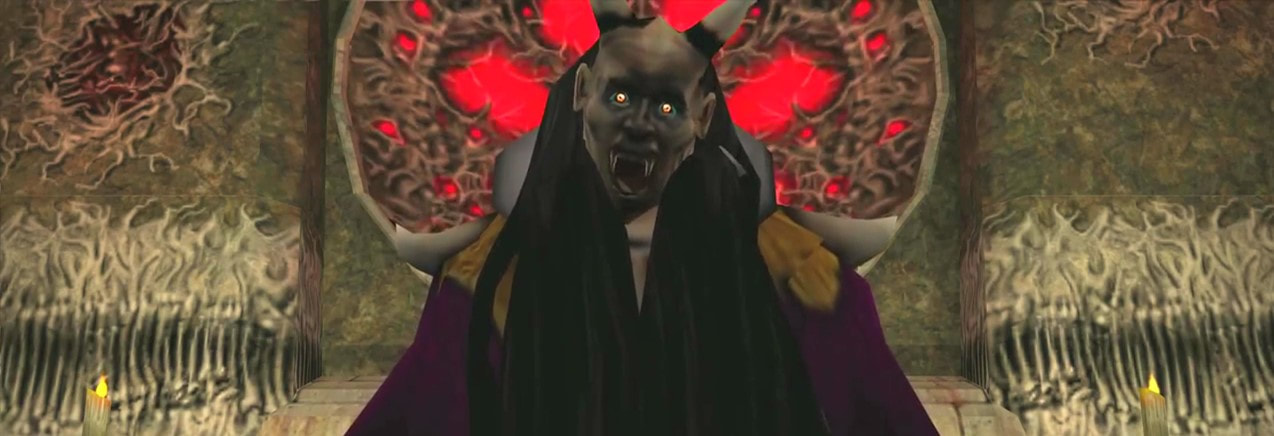

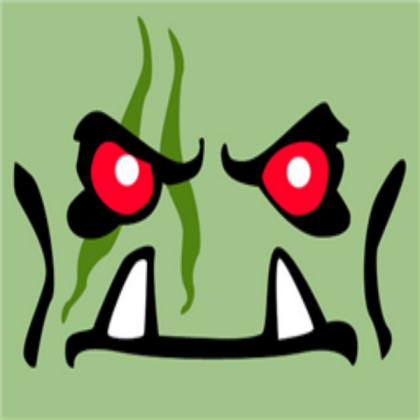
 RSS Feed
RSS Feed
